I am leaving Hong Kong after three wonderful years, a time in which I started to count myself as a kind of Hongkonger, albeit a gweilo or ghost as white people are called here. I began making notes for this love letter soon after I arrived, and sped up during Covid when foreign travel was not possible, totting up experiences as I went along, largely for friends as a primer for when they came to stay and for new immigrants looking for pointers to go beyond the obvious. I finished it in my two-week coronavirus quarantine returning from a trip abroad, which is a strictness that is likely to deter visitors for some months or even years to come. I have written it, therefore, in a way that I hope will last longer than travel bans.
Because the Hong Kong Tourism Board is hopeless. If you listened to them you might think all that is here are the Harbour and the Peak; beautiful as they certainly are, there is a lot more than that. So while I advise on how best to enjoy the big sites, I also flag a host of things I adore that many visitors and even long-time residents never bother with.
Let’s get the politics out of the way first. The self-proclaimed “Asia’s World City” is where east meets west. British rule was born in 1841 amid the Opium Wars, was resuscitated following the brief Japanese occupation during the Second World War, and then died in 1997 with the handover to “one country, two systems”. That ended abruptly on 1 July 2020 after a new National Security Law effectively incorporated the territory under full Chinese rule on the back of violent protests in support of independence throughout 2019. The South China Morning Post will give you excellent daily commentary on events.
The Hong Kong Special Administrative Region’s destiny is now undoubtedly to be merged with Macau, Shenzhen and other metropolises of Guangdong into the Greater Bay Area, a mega city of 80 million people to be brought about within a generation by a Beijing masterplan. Led by a puppet “chief executive”, how much can be retained of Hong Kong’s historic identity and role as a major global financial centre is its central challenge for the next decade or two. Meanwhile, we all wait to see if an extremist minority ups the ante with a significant escalation of violent resistance.
Hong Kong is tiny. I am always bumping into people I know in a way I seldom do in say London. There are only 7.5m of us holding local ID cards, and just 1.3m of us live on the Island itself, fewer than the margin of error in the Chinese census. No wonder it has become buffeted by forces beyond its control. Economically it is squeezed by the rise of Shanghai in China and the perceived safe port of Singapore in APAC, while caught in the crossfire of US-Sino disputes. Culturally it is inevitably Chinafying through immigration, with locals becoming jealously snobbish about their nouveau riche cousins who are accused of barging into queues and coarsely stuffing suitcases with designer goods that are cheaper than on the mainland. Meanwhile, in their collective nervous breakdown, Hongkongers have found a fondness for Britain that was apparently not evident before 1997; almost every Cantonese I know has recently acquired a British National Overseas passport, just in case.
The disfiguring scar inflicted by this free market experiment is hideous inequality. Hong Kong has the highest concentration of ultra-high net worth individuals in the world, and vast amounts of property and wealth are concentrated in the hands of just a dozen or so local families and a couple of ancient imperial conglomerates. A flat rate of 15% income tax, nugatory business taxes and no purchase taxes attract rich expats. That means we have relatively large net incomes but much of that goes on jaw-dropping prices for almost everything, especially accommodation. So it is expensive for visitors, and a Sisyphusian struggle for young people to get on the ladder.

Meanwhile, workers have zero rights, and even before the protests in 2019 and Covid in 2020 over 40% of Hongkongers were in state-supported housing and more than 20% were below the poverty line, defined as the minimum wage of HK$4,630 a month or about €120 a week. That is the earnings of the 400,000 domestic helpers from Indonesia and the Philippines, about 5% of the total population of Hong Kong, who work 12-hour days six-days-a-week living in the homes of families they serve. It is astonishing that Hong Kong is famed for having almost no property or violent crime, though obviously white-collar fraud is rife.
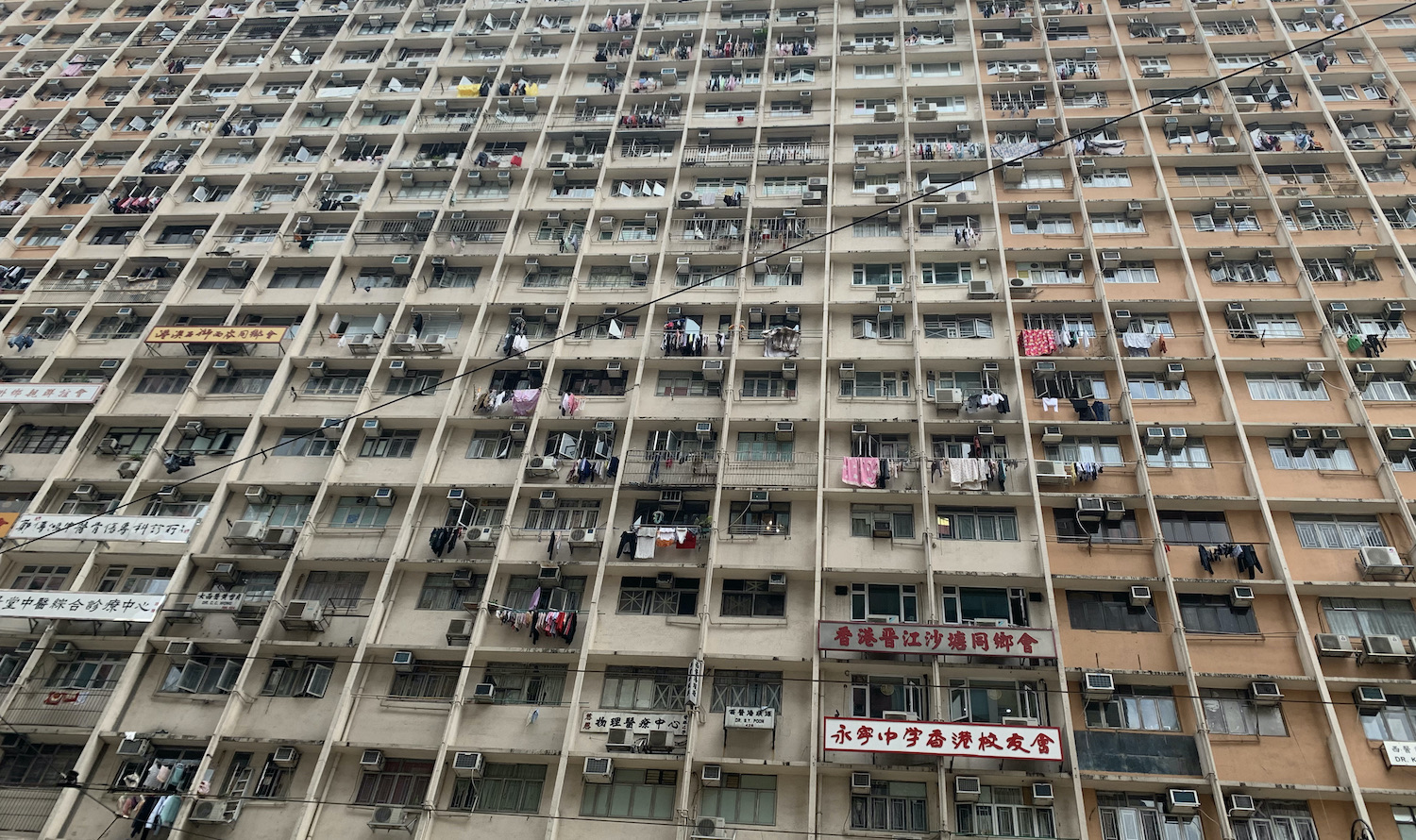
The 852, as Hong Kong is sometimes known by locals after our international dialling code which also serves as our zip code, has by far the most skyscrapers over 150m of any city in the world: 480. Next is neighbouring Shenzhen with 292 and New York 287. Construction works are a permanent feature as old buildings are torn down to make way for taller ones, and many are patterned with bamboo scaffolding as the city constantly regenerates. There are some ancient low-rise walk-ups left, but they are now surrounded by chopsticks – tall and thin – built in the past 30 years.
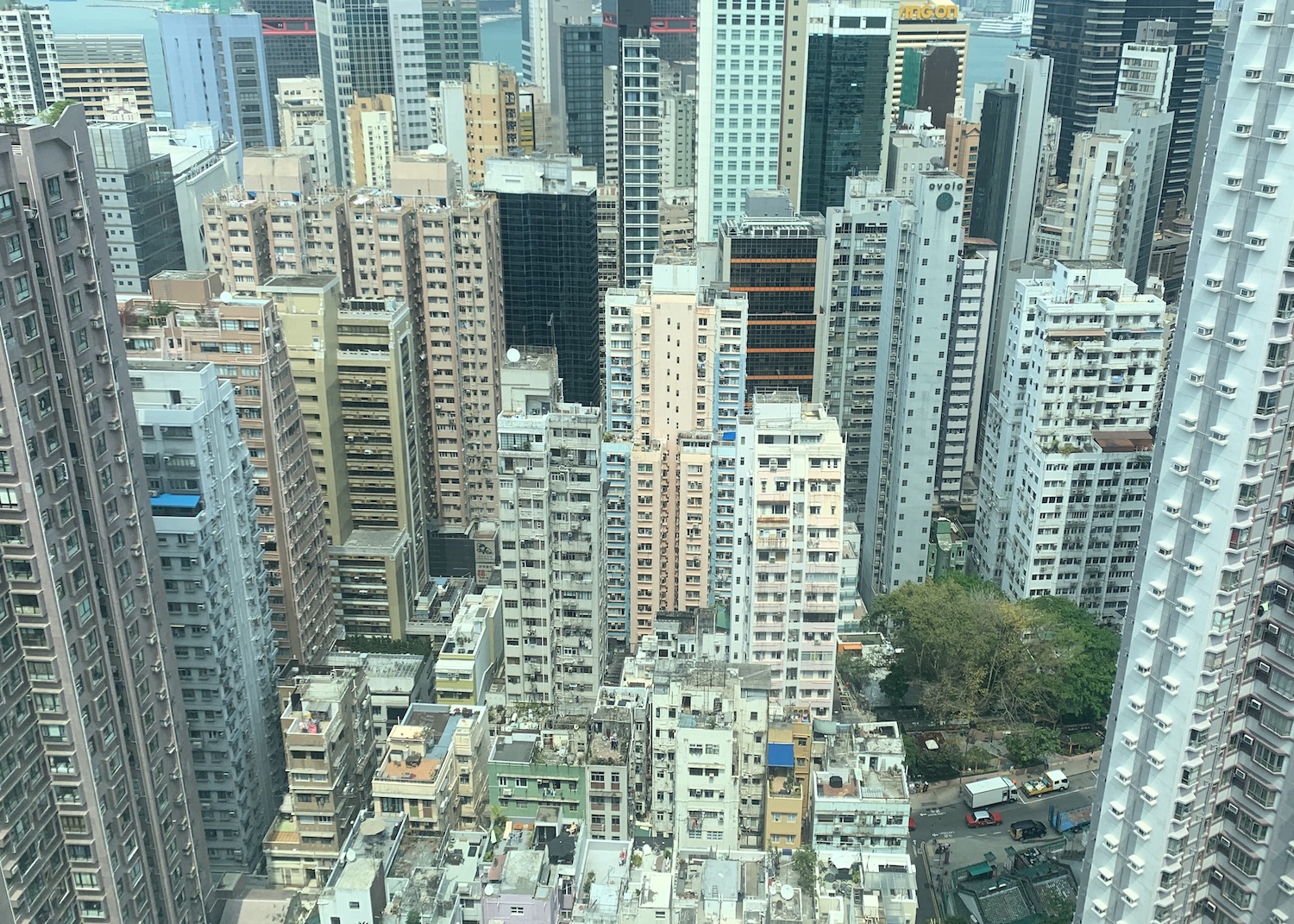
It is easy to get a top slice of Hong Kong (but much harder to get deeper under its skin). The MTR metro may well be the best on the planet, with cheap, clean, fast trains that have A/C and wifi throughout, though beware virtually everyone walking about with their faces glued to their phones and enormous stations cum shopping malls where one exit can be an half-hour walk from another if you get out at the wrong place. Buy an Octopus at the airport. They are invaluable but also a metaphor for Hong Kong’s decline: it was the first such contactless card in the world 25 years ago, and while we are still using it others have moved on to bank cards. Taxis are kept ultra-cheap to deter car ownership, trams are almost free, boats are plentiful and it is easy to walk the central areas. There are some of the best hotels in the world, more than fifty Michelin-starred restaurants, first class street vendors, high end shops and unique local boutiques.
More than 90% of the population are ethnic Han Chinese, largely from waves of mainland migrants fleeing the Japanese invasion in 1937, the civil war, the Communist Revolution, and the Cultural Revolution. The locals speak Cantonese – saying “josan” helps oil the wheels – though almost everyone also speaks English – after a while you will get used to the phrase “cannot, la” – and, increasingly, Mandarin.
There are only two sub-tropical seasons really: dry from November to April, when it can be chilly but is mostly lovely with blue skies and great views; and wet from May to October, when it is steamy, hot and humid, a period usually ending in destructive typhoons. So the best times for a quick visit are the changeover spring and autumn weeks.
Hong Kong is a world leader in public holidays, with seventeen in all. After the handover the day off for the Queen’s birthday was lost so another was hastily invented for the Buddha’s birthday. Many of them are accompanied by festivals, so visiting during one of these is great fun. The biggest of course is the three days of Chinese New Year, usually in February. In addition to the lion dances you will find all over, wander around Victoria Park flower market on new year’s eve day before joining the crowd at Sik Sik Yuen Wong Tai Sin temple in Chuk Un to rush at midnight to the main altar to light incense sticks and shake bamboo cylinders; on day one there is a parade in TST; on day two the Victoria Harbour fireworks; and on day three go to the Che Kung Miu temple in Sha Tin to spin a wheel of fortune and bang a drum for luck. Oh, and stock up with red packets and orange fruit; then for the next month don’t get your haircut or buy shoes but do buy trousers. Superstition is as central to Chinese culture as maintaining face. Gong hai fat choy.

Other events to target include the Cheung Chau Bun Festival in May, Dragon Boat Racing on the Tuen Ng Festival at various places in June, and the mid-autumn festival for fire-dragon dancing in Tai Hang and Pok Fu Lam. The Rugby Sevens, a Hong Kong institution for teams from around the world, especially the Pacific nations, with fans in fancy dress swigging too much Tsingtao while reddening in the sun, traditionally held Friday to Sunday on the first weekend in April, is a must.
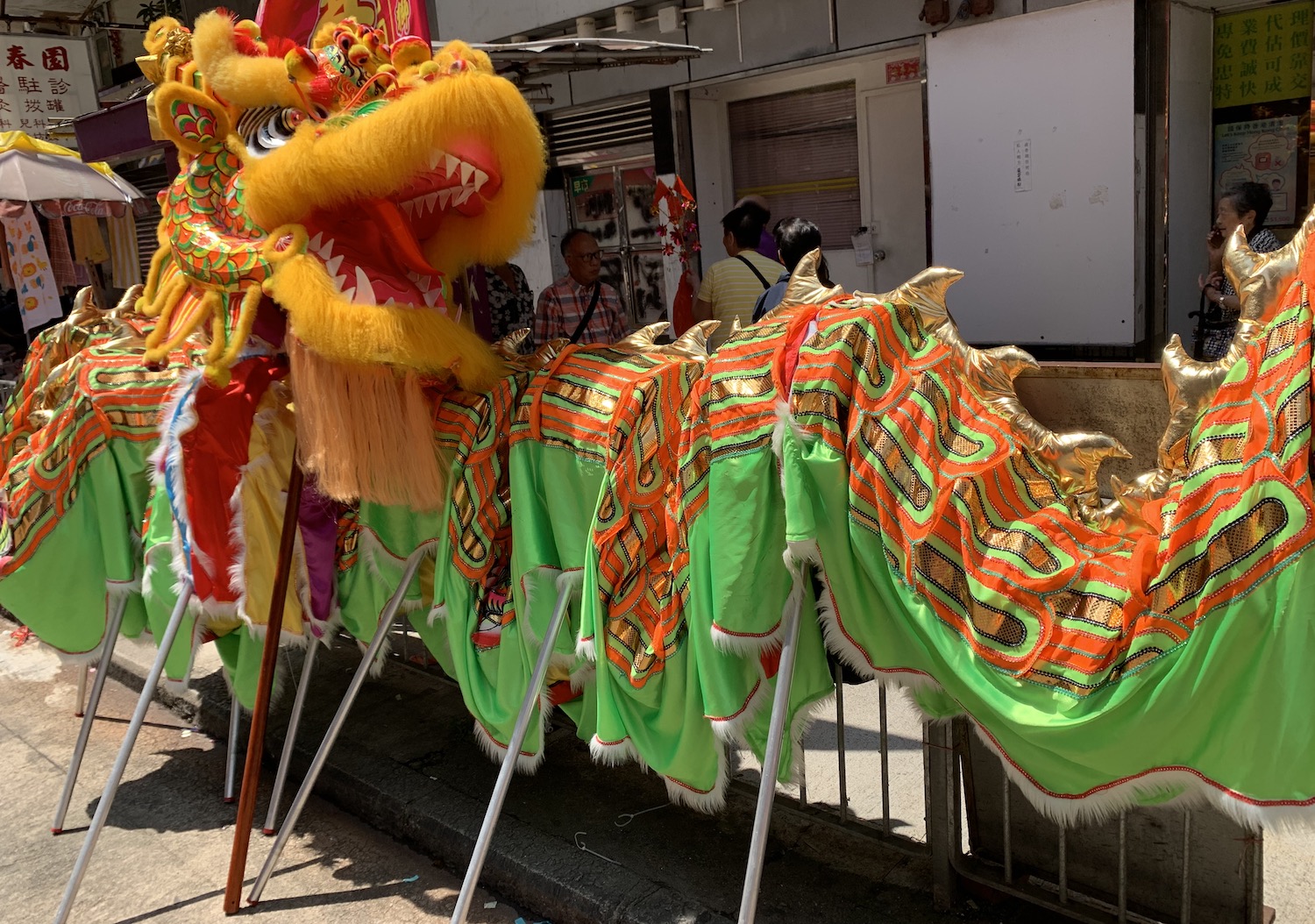
Of course, these events were all deferred during the coronavirus pandemic in 2020-21. Even though in the first eighteen months we had only 12,000 cases – and all but a few hundred of those were brought from overseas and were instantly hospitalised at immigration – with fewer than 250 deaths, Covid obviously hollowed out high streets here as much as anywhere else. Hong Kong has been more or less cut off from the world since February 2020, when passenger numbers through Chek Lap Kok airport fell from a historic daily average of 200,000 to fewer than 500. But this is the home of creative destruction – bars, restaurants and stores are constantly shut down, then rapidly replaced by the latest in fashion – which makes it a likely candidate to bounce back first and fastest from the pandemic as well as its other recent troubles.
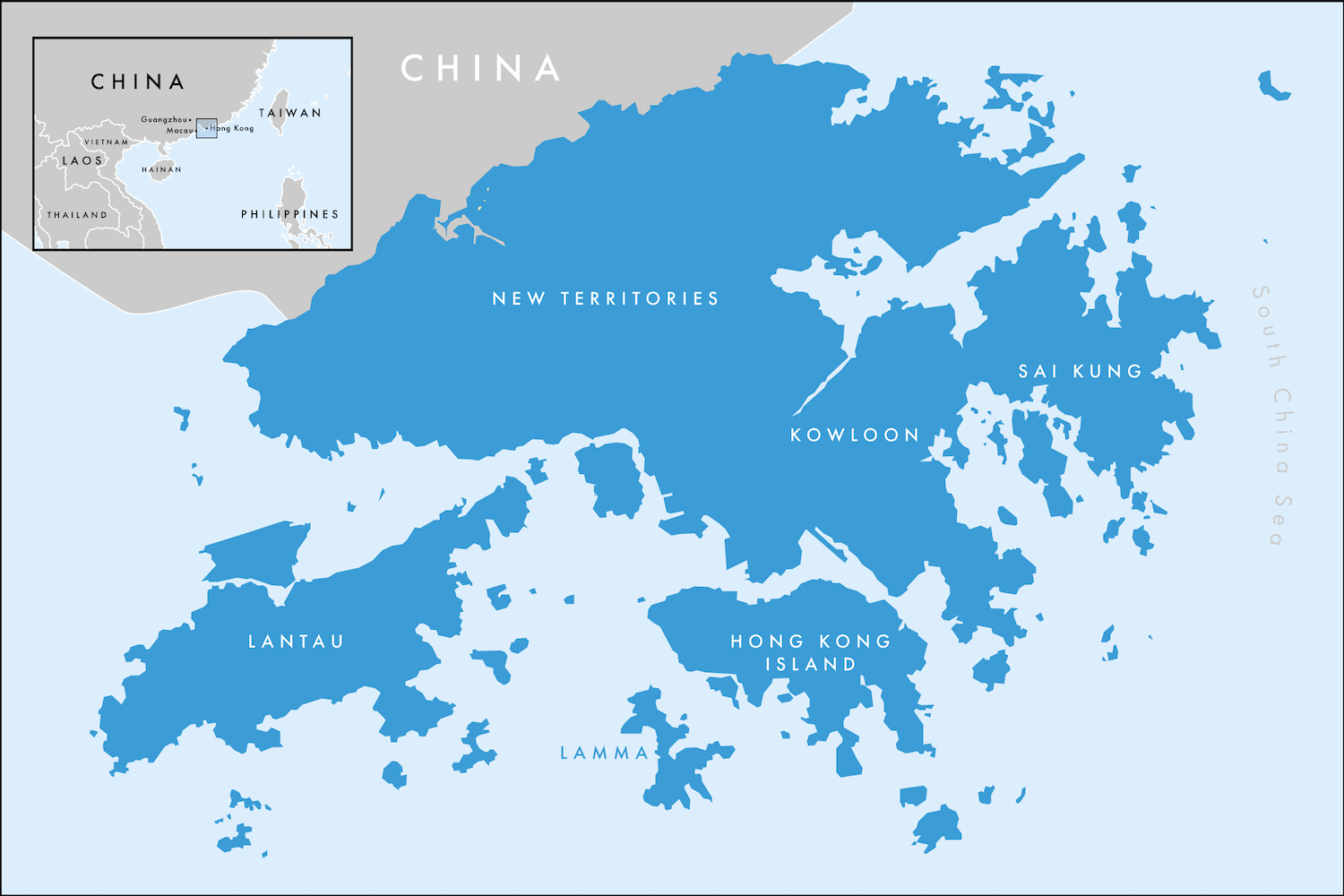
The Special Administrative Region is divided between Hong Kong Island, Kowloon, and the New Territories, incorporating Sai Kung and the eastern islands as well as the western outer islands including Lantau and Lamma. The best way to get an instant overview is by helicopter tour; you book them from Heliservices in the ferry terminal at TST in Kowloon and take off from the top of the nearby Peninsula Hotel. A useful approach to get going at ground level is to take a walking tour; Jason Wordie at Talks And Walks is your man for that as he will give you all the local history and illuminate hidden points of interest in various neighbourhoods.
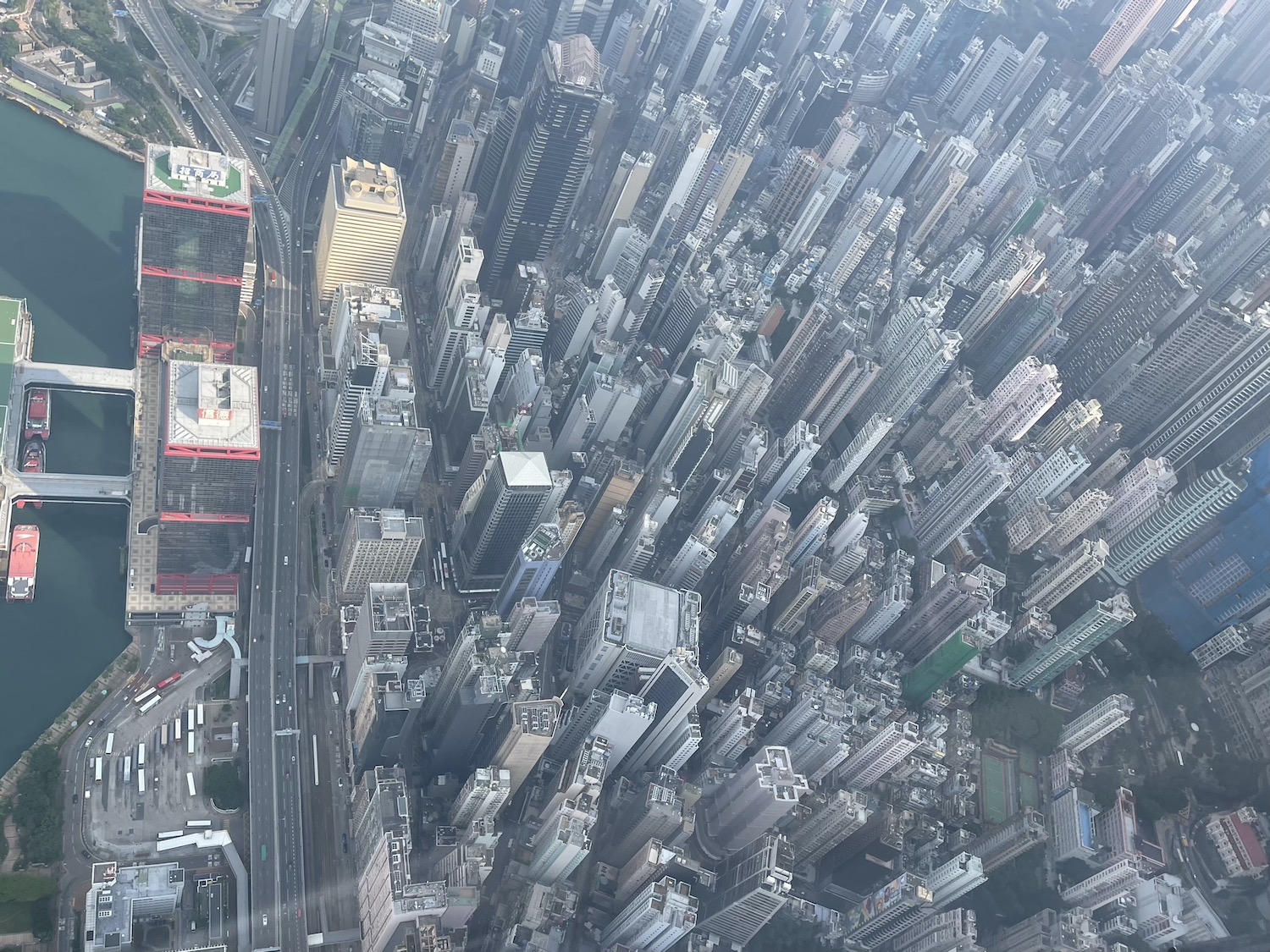
There are plenty of creative ways to experience the SAR. Although it is now 40 years since the golden era of Bruce Lee and Jackie Chan, and 20 since the gorgeous In The Mood For Love, there are still acclaimed local films. For instance, Still Human in 2018, Suk Suk in 2019 and Drifting in 2020 all present alternative perspectives on the city. There are many more art galleries, jazz bars, stand-up venues, and literature and music festivals than you might imagine. Big ones include Art Basel (May), the International Literature Festival (October) and Clockenflap (November).
On top of which there are loads of places to learn Cantonese, xiangqi and mahjong (Virginia Chan is excellent and also does food tours to give you an introduction to everything from congee to hot pot via chicken’s feet), feng shui (we used Master Zhou Fanfu), tai chi (we found the Chen Style Institute excellent) and other martial arts as well as a host of additional aspects of local culture.
Hong Kong Island: Urban Life
The defining quality of Hong Kong is its unique energy. That is driven by its exclusive position as a major financial centre where the sticky climate coupled with tiny apartments cause so much of life to happen not behind closed doors but tangible to all on the street. As they say, the colours, the sounds, the smells, the views, the food, the weather, all seem much more extreme than anywhere else. And the place to experience all that dynamism first of course is in the urban centre of Hong Kong Island.
Start with Victoria Peak, home to the most expensive real estate on the planet, to give you your bearings. On a clear day, catch the funicular Peak Tram from near the calming eight hectares of Hong Kong Park, or walk 45 minutes up the Morning Trail. At the top, circle the Lugard Road loop for round-Island views, and then enjoy the ultimate panorama of Central district and Victoria Harbour from Sky Terrace 428. Another great spot is nearby Rajasthan Rifles for a curry with a view.
For as far as the eye can see there are office skyscrapers and apartment chopsticks, cramming almost 7,000 people into every square kilometre. If the whole world was as densely packed as this, all 8 billion of us would live in an area the size of Egypt. Very few of these building have a floor 13 or any floor ending with a 4 (because the word 4 sounds like “death” in Cantonese) while an apartment on the 28th costs more than the one above with better views (because 8 sounds like “wealth”). As I say, this is a superstitious place. You cannot see them from here of course, but jammed into corners all over the city are shrines to To Tei Kung, the Earth God, and pocket gardens with sitting-out-areas where you will find clusters of tai chi practitioners every morning.

Just in front of the Peak is the Mid-Levels, the Surrey-like enclave of expats south of Caine Road, where it was illegal until not that long ago for Chinese people to own property. In the forest of concrete and steel and glass further down, parallel to the water, is Queen’s Road, the first road built in Hong Kong, where the hill stops and turns flat because this was the shoreline before the land reclamations of the twentieth century. British merchants were carried up and down the narrow and dizzyingly steep slopes between Queen’s and Caine, notably Aberdeen Street, from docks to home and back again, in sedan chairs until 1965 and rickshaws until 2006. These days, commuters use the 800m-long Mid-Levels Escalators.
Halfway between Caine and Queen’s is Hollywood Road, which houses the incense-heavy pen-and-sword Man Mo temple, dozens of antique shops and art galleries, as well as some of the key memorials of imperial rule.
These include Possession Point, now the peaceful water garden of Hollywood Road Park, the spot where the British flag was first raised in the colony, the Police Married Quarters, recently converted into an arts hub, the Tai Kwun police station and prison, these days an immaculately renovated heritage centre with a lovely courtyard for eating and drinking, and a little further along Government House, the official residence of the Governor from 1855 to 1997 and since then home to the Chief Executive, the highest paid head of government in the world.
Off Hollywood are many of the most popular gweilo haunts. The raucous bars of Lan Kwai Fong used to be the centre of tourist nightlife but the less icky crowds have shifted along to Peel and Staunton and other streets in Soho (South of Hollywood). Specific spots around here to look out for include the controversial Foreign Correspondents’ Club on Lower Albert Road (the setting for John Le Carre’s classic The Honourable Schoolboy, the dressing-up stalls and antique steps of Pottinger Street, modern Yung Kee for probably the most acclaimed roast goose in town and storied Lin Heung Tea House for traditional trolley-served dim sum, both on Wellington, antique Luk Yu Tea House on Stanley dating from 1933, Last Governor Fat Pang Chris Patten’s favourite Tai Cheong egg tarts on Lyndhurst, Oolaa on Bridges Street for brunch and sports TV, and scores of places for a rejuvenating yet painful foot massage.
Side-by-side with gweilo drinking culture is the authentic Graham Street wet market; I strongly recommend the colourful dragon fruit and the gigantic sweet peaches in the summer. The Graham Street wall mural is a major Instagram attraction for Asian tourists; it is on the side of the Goods of Desire store, a playful place for souvenirs designed with stylized images of Hong Kong.
To the west of Soho is Sheung Wan, a traditional and now uber cool district of stepped streets with Chinese labourers’ walk-up homes that has recently gentrified. Here you can find Michelin-starred restaurants (try Tate Dining Room, the only double Michelin-starred restaurant with a female chef in the whole of Asia), and top ten globally-rated cocktail bars (personal favourites include Coa, the Daily Tot, the Diplomat, the Old Man, Whisky & Words and the Wise King) tucked into alleyways next to tumble-down shops that still use an abacus, never got a cash-register and certainly won’t take credit cards. These include the booth on Hillier Street that sells live snakes to the local restaurant trade.
In and around Tai Ping Shan (star of James Cavell’s classic novel of the founding of Hong Kong, Tai-Pan) are tiny temples. Upper Lascar Row, AKA Cat Street, has curios stalls where you can find Mao figurines from the Cultural Revolution alongside posters of Bruce Lee movies as well as all the tat with which feng shui masters recommend you clutter your home. Man Wa Lane is devoted solely to a row of cabins selling Chinese chops, used as rubber stamps on official documents and as a harbinger of promotion at work in Chinese folklore, apparently. Wing Lok Street is the place for dried fish; there are plenty of shark’s fins here, though there is also plenty of graffiti around advising you not to eat them.
There are street food stalls galore around here. One hidden place to find some is in what are called Cooked Food Centres, large covered buildings with fresh fruit and veg sold in the wet markets on the lower floors and cheap food stands above. You’ll see them all over Hong Kong, often frequented by office workers at lunchtimes and retired workers at all times. The Queen Street one is particularly highly rated. The best spots include Shui Kee Café for a classic breakfast of noodles with luncheon meat and fried egg, Tung Kee for seafood, and ABC Kitchen for Italian.
There are traditional artisans all around here too. One example is the line of shops on Queen’s Road near the Sai Ying Pun MTR station where locals buy “paper offerings”, replicas of their relative’s favourite items, such as cars or shoes, to be placed in their coffins at cremations. Gorgeous Mee Wah Qipao is the oldest bespoke cheongsam shop in Hong Kong. And ramshackle Tak Chong Sum Kee is the last place in Hong Kong selling handmade bamboo steamers for dim sum.
Going west, Sai Ying Pun is turning into Sheung Wan’s little cousin, served by another escalator system, and offering another wide range of bars and restaurants, mingled among the motor repair garages that used to form the backbone of the High Street. A favourite is Potato Head. Just down from the Beijing Liaison Office is the biggest Soho House in the world, near the flagship branch of Feather & Bone, which serves the best steaks in town.
Along Des Voeux Road run the ancient matchbox trams that ply the north coast of the Island from Kennedy Town near Hong Kong University in the west to Chai Wan in the east for just HK$2.60 a ride.
Heading back east into town along the waterfront, a major tram stop is at the Western Market, the oldest surviving market building in the city, dating from 1906, close to the Shun Tak terminal for ferries to Shenzhen as well as ferries and helicopters to Macau. Next are the Central Piers for ferries to Kowloon and the western outer islands. From Pier 9 or 10 you can hire a traditional wooden junk to chug around the harbour or party at night around the South China Sea.
The dominant building here is the 387m-tall International Finance Centre, which houses the Stock Exchange, offices and upscale malls, right beside the Ferris Wheel. The Grounds, an open-air cinema for the winter with a big screen, deck-chairs and table service, is just in front of that.
East of here, behind the most valuable barren land in the world, right on the front, is some of the most iconic architecture of the city, including: the grand General Post Office Building, now threatened with demolition to make way for more tower blocks, Jardine House immediately behind, which has 1,750 port-holed windows in what was the city’s first skyscraper when it opened in 1973; the Landmark Mandarin Oriental; HSBC HQ, with the pair of lions outside that you find on the bank notes they issue; City Hall, where Maxim’s Palace offers classy dim sum from 11am; Chater Gardens, around which are several of the exclusive members’ clubs for which Hong Kong is famous including the American Club, the China Club and the Hong Kong Club; the iconic new Bank of China Tower, which is on the rival bank notes they issue; and the koalas of the Lippo Building.
On the waterfront are the Central Barracks and Chinese People’s Liberation Army building, near Tamar Park and the Legislative Council complex and government buildings that were the epicentre of the 2019 protests and are now all enveloped in security barricades.
Behind here and to the east of Central is Admiralty, where you will find all the usual five star business hotels (a very good option with Asian roots is the Upper House), near Hong Kong Park and above the gigantic Pacific Place shopping mall. This was originally the site of the British garrison and is still the home of the British-Consulate-General, opposite the former explosives magazine of the British Victoria Barracks, now the arts and cultural club of the Asia Society.
Further east on the shore is the Convention and Exhibition Centre. In front is Golden Bauhinia Square where the handover ceremony was held in 1997; every morning there is a small parade to raise the Chinese and Hong Kong flags. The flower of the Bauhinia blakeana orchid tree, discovered in Hong Kong and named after a former governor, appears as a white ensign on the SAR’s red flag. Just before 8am, half a dozen Hong Kong police officers arrive in a small van, carefully fold the two flags, march to the poles (the Chinese pole is slightly higher than the Hong Kong one), raise the flags (the Chinese flag always reaches the top just ahead of the Hong Kong one) and five minutes later head off in their van again. Nearby, the Royal Hong Kong Yacht Club at Kellett Island has the best terrace in the city, right on the water. Next door, on the Causeway Bay typhoon shelter near the very first plot of land to be sold on the Island, back in 1841, you will find another traditional ritual, one that has occurred every day since the 1860s: the firing of the noonday gun, a noisy naval cannon owned and operated by Jardine Matheson.
Behind is Wan Chai, where for decades commercial and military sailors found their fun in licensed brothels. As early as the 1870s there are records of as many as 123 bordellos, with 1,400 prostitutes, and in the 1960s the area was brought to life in the international hit film The World Of Suzie Wong. More recently, Lockhart Road was the scene of Paul Gascoigne’s famous “dentist’s chair” ahead of Euro 96, and these days it is a place of sleezy strip bars and expat pubs.
South of Hennessy Road the neighbourhood is gentrifying though. Star Street has cool bars and boutiques, especially Lane Eight, the coolest trainers on the planet. Worth a quick look is the Blue House, a cluster of heritage properties, one of the few remaining examples of four-story tenements with balconies in the tong lau style that were once the stars of the district. And the Pak Tai temple is a sizable structure holding a 3m statue of the martial deity dating from 1603.
Other important buildings around here include the Hopewell Centre with its Grand Buffet in a 360° revolving restaurant on the 62nd floor, and the Central Plaza with its free Sky Lobby observation deck on the 46th floor (this was the tallest building in Asia until 1996 and is now just the third tallest in the city). You get a great view of them all from down at the shoreline path that now runs all the way along the north coast of the Island, and from up at Bowen Road in the hills, which are the two go-to routes for jogging.
The Jockey Club is a central institution in Hong Kong life and its premier venue is the race-course in Happy Valley, one of the most beautifully situated sports stadiums on the planet. Founded in 1884, these days the HKJC is a not-for-profit that has a monopoly on all legal gambling in the SAR, though it is widely believed quite a lot of illegal money is laundered here too. It’s Charities Trust is one of the ten biggest philanthropists in the world. Close by is the Football Club and up in the hills is the Cricket Club, both private members’ outfits with pleasant facilities if you can wangle your way in.
Overlooked by skyscrapers – most notably the award-winning Highcliff up on the hill – one evening a week locals and tourists crowd the Happy Wednesday forecourt for beers and betting. A good option is to book a table at the buffet restaurant The Gallery or the more clubby Adrenaline both of which have open-air balconies over the track.
Near here is Tung Wah Eastern Hospital, a good place to experience full-on Chinese medicine, from acupuncture with hundreds of needles at a time to various potions and lotions.
Causeway Bay is always crowded like Oxford Street with mainstream shoppers, from better class of department store Sogo to the thirteen floors of Times Square. One quirky spot is under the Canal Road flyover, where every day you can find sorcerers for villain-hitting, although the annual festival for this ritual is the Day of the Awakening of Insects, usually in early March. Locals write on special paper the names of people that have annoyed them recently – their boss, an ex-boyfriend, a celebrity, whoever – and give them to the old ladies there who, for a small fee, lay a curse on the names and spend up to 10 minutes hitting the paper with a shoe to ram home the point.
Victoria Park, the biggest patch of public green space on urban Hong Kong Island and full of sports’ courts, is a peaceful retreat. It hosts mass tai chi classes every day, holds an enormous flower market at Chinese New Year, and used to be the venue for the annual vigil to ally with the victims of Tiananmen Square every 4 June before it was banned. Nearby Hong Kong Stadium is the home of the Rugby Sevens tournament, and Lai Tak Tsuen is one of the city’s iconic housing estates because its unusual cylindrical design is ideal for abstract photography.
Throughout all these areas of urban Hong Kong, most concentrated on the footbridges and walkways around the IFC and about Victoria Park, you can witness an appalling phenomenon every Sunday. Live-in maids, nannies or amahs are legally entitled to this one day off a week and to enforce it they are not permitted to remain in their place of work/residence. With tiny incomes and nowhere to go, many wearing kitten heels and quotes from the bible on their T-shirts, they flood the streets, huddling in cardboard boxes or small tents for privacy and warmth in winter. In clusters they pray, play cards, eat home-made noodles, give each other manicures, or sing and dance.
The maids often live in tiny purpose-built rooms at the back of a family apartment, with a bed above a sink, toilet and washing machine. Their employers have been known to speculate on the infamous Hong Kong Moms Facebook Group whether it is OK to make them do the housework without turning on the A/C to cut bills when in the summer it can often reach 30 degrees and 90% humidity. Stories are commonplace of sackings on the spot if they become ill or pregnant.
Hong Kong Island: East, South & West
Expats constantly tell each other that there is much more to Hong Kong than they expected. And there is. The skyscraper skyline might be where the money and headlines are made, but there is a lot to see and do behind the scenes too.
Very few people drive around the Island, but it is an excellent way of taking in all the nooks and crannies of the 65km circumference that Hongkongers love but visitors easily overlook. The place to rent a car is Hertz in the IFC. At a rush it might take only four or five hours to nip around the perimeter, but you can do a lot in a day and more.
The best way to experience the north of the Island, however, is by “ding-ding” tram, which going east will pull into Chun Yeung Street wet market at North Point very cautiously, waiting for the crowds to part as it inches along.
Mainland Chinese immigrants, especially Shanghainese communists fleeing the civil war before the outcome was clear, built North Point. The area is peppered with their pioneering public housing estates, once glamorous theatres, and currently buoyant art spaces. These days it is fighting gentrification but one unmissable throwback is the time-warp Chinese Goods Centre, purveyor of kitsch and one of the best places to buy a traditional tea set, especially if you want a highly prized one with Mao painted on the side. The North Point Cooked Food Centre on Java Road is one of the best in the city, with a wet market below the second floor restaurants, the pick of which is Tung Po.
Clockwise, next is Quarry Bay, the rapidly developing commercial centre attracting firms away from the eye-watering rents of Central to the new Tai Koo office blocks cum shopping malls cum living quarters. One old landmark here is the Yik Cheong Building, aka as the Monster Building, famously one of the most densely packed in all Hong Kong. There is a local phenomenon of Instagramming architecturally interesting housing estates, though it is controversial as it is thought to present buildings as beautiful when in fact they hide ugly social problems. The Yik Cheong Building is certainly one of those.
From here you can walk all along the waterside promenade, through Quarry Bay Park and past the row of six or eight lovely open-front restaurants opposite the Coral Sea Ferry terminal at Sai Wan Ho and on to the Shau Kei Wan typhoon shelter and harbour. The end of both the tram track and the MTR Island Line is a little further round at Chai Wan.
Driving south through Shek O Country Park will take you through a forest that few first-time visitors imagine is a crucial part of life for Hongkongers, who are addicted to weekend hiking here and elsewhere. For advice on routes, see the government’s hiking website or All Trails. There are hundreds and thousands of trails all over Hong Kong, including the renowned Wilson (78km) and MacLehos (100km). Trail running is big, as is the phenomenon of older Chinese men carrying old-fashioned radios in their backpacks, blaring Chinese operas as they walk, or taking their pet birds for a walk inside their cages. Here is a particularly popular one: the Dragon’s Back, an easy two hours with 360 views from Stanley and the South China Sea to Victoria Harbour and Kowloon.
Zigzag along the shoreline down the peninsula to two popular east coast beach towns. The north one is Big Wave Bay, in a small inlet with a few surf shops and a couple of cafes. Then 2km south is bohemian surfer-chic Shek O, a rocky headland next to a broad beach with busy barbeque pits at the back and side, though Cococabana restaurant right on the beach is also in demand. The 852 has forty-one of these gazetted – government-maintained – beaches, with anti-shark nets out at sea, and facilities on the manicured sands including lifeguard towers and toilets though never sun-loungers. There are also forty-nine less well-kept public ones, usually in the remoter parts.
Double back past the gorgeous pastel coloured apartments, then drive over the Tai Tam reservoir dam. There are numerous hiking routes around here, notably Mount Butler for sweeping views over the reservoir, and Ma Kong Shan (known universally as The Twins) for a nice leg burn while looking down on the isthmus of Stanley.
There is a much shorter scramble in Stanley down the rocky cliffs to Rhino Rock (which unlike the more famous Lion Rock does actually look like its eponym). This is worth doing because of the spectacular views it affords into the maximum security prison on the left and the old fort on the right. The prison is famous for holding the small band of celebrity Hong Kong inmates, including the leaders of the Occupy Movement of 2014 and the protests of 2019, such as Joshua Wong and Jimmy Lai, along with the “milkshake murderer” whose gruesome tale is told in folklore and in Never Enough. The fort was built for British troops but is now used by the People’s Liberation Army.
Most people come to Stanley for its covered market – a small nest of shops that spill onto the pedestrianised front where there is a line of bars and restaurants facing the sea – and its little beach – full of life and water sports.
There are several gorgeous islands south and south-east of here, mostly reachable only by yacht. But there is a ferry from Aberdeen and Stanley that takes half an hour to the island of Po Toi, just past Beaufort Island. There are several easy short hikes, a beautiful bay with a small strip of sand, a temple and a legendary seafood restaurant called Ming Kee, where razor clams and ginger calamari are the signatures.
Further west along the south coast is Repulse Bay, where there is a very good beach and a row of modern bars and shops known as The Pulse, ideal for people-watching, all in front of the second most expensive real estate in the world. Of particular note, apart from the Ferrari outlets, is the large apartment block with a hole in its middle; this is a common feature in Hong Kong though this is the most famous example. The hole is there at the insistence of feng shui masters who decreed that the dragons who live in the mountains behind need direct access to the sea or else they might knock the building down.
Around the corner along the lovely coast road is Deep Water Bay, another good beach, with a vast area of BBQ pits to the side that are frequently rammed at weekends. Coconuts bar and restaurant overlooks the other end of the beach. Driving here direct from Central over the Peak on winding Magazine Gap Road brings fabulous views of both sides of the Island.
Between Repulse Bay and Deep Water Bay there is easy access on Island Road to small ferries that take you in three minutes across to Middle Island. This is the training centre of the Royal Hong Kong Yacht Club where we learned to sail.
Next along the coast, after the lovely Hong Kong Country Club, is Ocean Park, a loss-making and controversial theme park. It is split into two halves, linked by a cable car that runs from near the Island’s main hotel away from the urban centres, the Marriott. The first part is a small zoo which is home to Hong Kong’s only pandas; the other an old-skool fun fair, with fantastically situated rollercoasters, notably the Hair Raiser.
A little further along is Aberdeen. On the front is the wholesale fish market and a row of landing stations for ferries, junks and sampans. From around here you can charter a squid fishing boat, which goes out at night in the spring. You dangle the hook from the line by hand over the side into bright lights that attract the squid, then the crew will cook your catch on board. We booked Ho Tak (9713 0568). You could also arrange to go deep-sea fishing with Kim Stuart (9122 0695).
Over the bridge opposite is Ap Lei Chau, the most densely populated island on the planet. There is a wide promenade and a good Cooked Food Centre beneath excellent examples of apartment skyscraper walls typical of Hong Kong that look imposing in the daylight but spectacular at night. At South Horizons on the western corner is popular Horizon Plaza, 28 floors packed with high-end fashion outlets and furniture shops, including antiques and made-to-order. There is a stiff hike over the hill and across the sandbar to its smaller sibling, Ap Lei Phai; a sampan back sometimes leaves from the pier by the lighthouse at the far end.
Aberdeen harbour is full of houseboats that rarely move from their moorings as well as ocean-going yachts. There are also many sampans floating around here looking for custom like taxis; they are a must-do in Hong Kong and usually cost no more than HK$10 a trip. They are operated mostly by elderly Hoklo and Tanka women from the traditional boat-dwelling communities. You can easily hail one from the quay to take you around the iconic Jumbo Floating Restaurant in the middle of the harbour. This is currently closed but will probably reopen at some point, not least because it is representative of the floating restaurants that have been a large part of the history of this area. It is big – with a capacity of 2,300 – and garish – the outside is so brightly lit at night you can see it from miles away and the inside attempts to replicate the vibe of a Chinese palace.
From Aberdeen there is a road tunnel back to Happy Valley and an MTR line to Admiralty but if you carry on around the south coast you will come to several idiosyncratic items of interest.
The Wah Fu Estate is well known because it is built around Waterfall Bay, containing the fast flow of fresh water, greatly reduced since the nearby reservoir was constructed, that is said to have given the city its name: Hong Kong means “fragrant harbour”. You have to scramble over the fence by the locked gate to get at it, but there are usually families playing in the pool at the bottom. That is at the west end of Waterfall Bay Park. At the east end, down a run of steps, is a most unusual sight. Ever since Wah Fu was put up in the 60s, when families moved out and did not want to take with them the little religious statues that had cluttered their homes, they simply dumped them near the spot where locals take their early morning dip in the sea. One resident, Mr Wong Wing-Pong, made creative use of them by cementing all these discarded little icons into the sides of the hill until they ballooned to number the many thousands that are here today. Constantly threatened by the government with destruction, it is too informal to have a name, but you can find it on the web as A Sky Full Of Gods And Buddhas.
From here you can walk to Cyberport on the best 3km of the 20km Southern District Coastal Trail that runs all the way from Stanley to Kennedy Town. Cyberport is a failed attempt at an out-of-the-way tech hub for the city, now just a pretty waterside park with attached lifeless office complex and vacant shopping mall (though with surprisingly pleasant cafes on the terrace facing the water).
Pok Fu Lam is a small village, where the central feature is the cemetery built into the steep hillside and which causes rents here to be relatively affordable as so many Chinese people refuse to live in sight of death as it is thought to be such bad luck. This raked style is typical of Hong Kong, but this may be the finest example. The best views are from Mount Davis Road. Mount Davis itself will surely one day be a major tourist attraction given its potential for panoramic views, but right now it simply houses a hauntingly overgrown Second World War fort at the top of a steep drive.
Kennedy Town is a student village. Hong Kong University, a world top twenty institution, the highest ranked of the city’s eight, is here, on the west end of the Island.
Around the corner as you return towards Victoria Harbour you pass the Belcher Bay recreation park and come to the Western District Public Cargo Working Area in Sai Wan. I mention it only because this dockside is better known as Instagram Pier. More than just a container terminal, people long came here to enjoy the sunset, skateboard, jog, dog-walk and catch-fish but in recent years it became the place where cool kids took photos of themselves among the industrial hardware. The gates are currently locked to prevent these intrusions, but you can still sneak in if you are careful.
Near here is the Wah Tung China Arts showroom. This cornucopia of ceramics is well worth a poke around for souvenirs, as it is where the big hotel chains and fashionable Hongkongers buy their antique Qing and made-to-order Chinese dinnerware and vases.
Closing the loop to circle back to Central is the waterside path to Sun Yat-sen Memorial Park, a great spot first thing for tai chi. Uniquely, Sun Yat-sen has managed to remain a heroic figure for Chinese nationalists, Chinese communists and Hongkongers alike, and he has a large statue here. Next door is the excellent 50m public swimming pool, the sports centre, and many outdoor sports courts and pitches.
Kowloon-Side
On the very tip of the Chinese continental landmass, Kowloon was ceded to Britain along with the Island of Hong Kong by the Qing Dynasty in 1860. For many years it remained undeveloped, used mainly for colonial tiger hunting. The population swelled rapidly in the twentieth century by refugees and in recent years it has become a densely populated, high-rise home to local Chinese with a totally different feel to Hong Kong Island.
There are three toll road tunnels from Hong Kong-side to Kowloon-side, but the magical ride is by Star Ferry, which goes from Pier 7 in Central to Tsim Sha Tsui, known everywhere as TST.
At the TST ferry terminal, if you exit right you will immediately see the brown brutalist Cultural Centre, including the Grand Theatre which puts on Chinese operas as well as international touring company operas and ballets three or four times a year. Opposite and along from the historic clock tower is a raised walkway from which to admire all day long the classic views of the Peak and Central skyline.
At 8pm every evening the harbour Symphony of Lights show starts for 15 minutes, and the view back to Hong Kong Island is no worse at night.
You can keep walking all the way along the water past the Intercontinental, the Rosewood, and the K11 shopping complex filled with giant versions of all the usual high-end brands, with the Avenue of the Stars in front where can take your selfie with a life-sized statue of Bruce Lee, past the Shangri-La, over the bridge to the Kerry right opposite the ferry terminal in Hung Hom that links directly with Pier 8 in Central.
Near here is Kam Fat, which along with Biu Kee opposite the south end of Temple Street Market, are the last two places in Hong Kong to carve and paint mahjong sets by hand, a wonderful souvenir. They are both little more than tiny cupboards straight from a movie set and thanks to computer games, this craft is dying out, though you can hear still the clack-clack of tiles from games in parks as well as Mahjong Parlours all over. It is not hard to find a teacher and it is well worth putting in the effort to study the seminal Asian game for the fun and for its ability to open doors into local homes. Sik wu!
Back at the TST ferry terminal, if you turn left beyond the glitzy Harbour City shopping mall, though more easily reached by one stop on the MTR from Central to Kowloon, is the West Kowloon Cultural District, largely still under construction. The standout building here is the 484m-tall International Commerce Centre, currently the twelfth tallest building in the world. At the top there is a Ritz-Carlton Hotel and its Ozone Bar on the 118th floor, advertised as the highest in the world at 490m above sea level, with an eat-as-much-as-you-like buffet and free-flow Dom Pérignon along with immaculate views back to Hong Kong Island over Victoria Harbour. A running race up all the stairs from bottom to top is held every December.
Also around here is the Xiqu Centre opened in 2019. It has a lovely Grand Theatre as well as the intimate Tea House Theatre, which is a replica of the traditional way to enjoy Cantonese opera, served here in an easily digestible greatest hits collection, each ten minute chunk explained in advance by a compare, while you taste dim sum and sip jasmine tea at your seat.
Nearby is the West Kowloon Station where you can catch a high speed train to Shenzhen (14 minutes) and Guangzhou (47 minutes) in Guangdong in the Greater Bay Area of south China. The station is highly controversial because of the decision to site the border crossing here, which was seen by critics as a land grab into the heart of Hong Kong by China.
At the TST ferry terminal, if you walk straight over you will pass Canton Road, with more versions of high end shops, to one of Asia’s landmark hotels, the Grande Dame of Hong Kong, the Peninsula. You can be ferried by one of their fleet of unique emerald green Rolls Royce Phantom VIIIs, and you must do afternoon tea in the lobby. Try the Felix at the top. And get the chef’s table in the Gaddis.
Round the corner is Nathan Road, the main artery through Kowloon, where plenty of blokes will try to sell you a copy watch or a cheap suit that can be made-to-measure in two days. At the southern end on the right hand side as you walk up is Chunking Mansions, a warren of budget dorms and cheap curry houses, more or less opposite Hong Kong’s largest mosque. Nearby on the same side of the road is Sam’s, the metonym of bespoke tailors in the city, stuffed with photos of famous customers from Obama and Trump to Prince Charles and Kate Moss all being measured up here.
Behind here is Signal Hill Garden, inside which is the 19m-tall Blackhead Point Tower. This was built in 1907 by the Hong Kong Observatory in order to drop a ball at 1pm every day visible to sailors so they could set their chronometers accurately; these days the Observatory warns Hongkongers of imminent typhoons on its app.
At 100 Nathan Road is the flagship of the Wooloomooloo chain for a great steak and a great terrace. Further up you will come to Yau Ma Tei district, which is where you will find the short stretch of Temple Street Night Market (open every day from 2 till 11pm) surrounded by jade and jewellery stores as well as local fruit and veg stalls. This is ideal for fast-fashion and cheap knock-offs as well as pawn brokers, porn shops and prostitutes.
Canton Singing House is the oldest of the singalong parlours that are popular in the area; Chinese operatic extracts and Western pop classics are both included in the repertoire. At the northern end of Temple Street are as many as thirty gazebos of fortune-tellers eager to read your astrological charts, your palm or your tarot cards; as one of them reliably informed me that I will die at the grand old age of 95 a very rich man, I can heartily recommend them.
Further up Nathan Road is Mong Kok (appropriately translated as “crowded corner”), the densely populated heart of youth culture in Kowloon. The best place to get a look down on the remaining famed local neon lights is the Tung Choi Street overhead walkway. To explore properly, it is worth staying at the five-star Cordis Hotel, plonked like an oasis in the chaos.
Mong Kok offers offbeat shopping. Cool stuff for street kidz can be found in the local boutiques of the Spiral section of the Langham Place uber-mall and in the TOP mall, and kooky household stuff is at 618 Shanghai Street. In the tightly packed streets running south to north you will find Ladies Market, originally devoted to women’s clothes and accessories but now a flea market for all-comers with plenty of fake bags and watches, the Computer Centre for bargain electronics and gadgets galore from China and abroad, Sneaker Street for every kind of trainer under the sun, the Goldfish Market, dozens of shops selling tiny plastic bags of aquarium fish, and the Flower Market, which does what it says on the tin.
Other things to look for around here include Tong Lau colourful colonial-era walk-up tenement buildings (you can visit one at 119 Lai Chi Kok Road), hipster espresso bars and craft beer tap rooms, the Wall of Fame decorated again and again by local graffiti artists (up a hidden alleyway between Argyle and Bute), the e-sports stadium, and the 4 June Museum, which has been repeatedly closed and relocated and closed again, this time possibly permanently. There are also loads of good street food vendors, noodle bars, satay and wanton stalls, rice dumpling and roast goose outlets. As always in Hong Kong, long queues identify the best joints, but the old adage that the quality of a place can be judged by the state of its toilets does not apply.
Having effectively tracked the red line of the MTR through Prince Edward, a major centre of protests in 2019, Nathan Road now bears north west over Boundary Street, which marked the limits of the land transferred to Britain in 1860. Then you are in Sham Shui Po, the poorest borough in the SAR. Hong Kong Island is just around the corner, but it is also in another century. This was the font of the manufacturing boom of the 1970s when the Made In Hong Kong legend was commonplace on western consumer goods, and now metal works and the like have been turned into cubby-holes selling fabrics and trimmings. There are twenty or thirty streets crammed with market stalls, certainly not aimed at tourists but fascinating to wander, rummaging among the rag-and-bone. Around here is the flagship of small chain Tim Ho Wan, thought to be the cheapest Michelin-starred restaurant in the world; a pig-out, including the signature pork buns, costs about HK$70.
Just east of Sham Shui Po is Nam Shan Estate, a favourite with Instagrammers because of its colours and symmetry. The spot above the wet market, with arched monkey bars, is most famous, but the overhead of the playground is also popular.
All across Kowloon peninsula, from Tai Kok Tsui in the west, including Sham Shui Po and Mong Kok, to To Kwa Wan in the east, are notorious cage homes, known euphemistically by the SAR Government as bedspace apartments and more aptly by locals as coffin cubicles. These can be simply a bunk bed separated from its neighbours by a wire fence (for about HK$2,000 or €200 per month) or homes for families of four, about 9m2, only 2m2 bigger than local prison cells, in which beds, kitchen and toilet are all squashed into one squalid space with low ceilings (for HK$5,000 or €500 per month). This can still be a big chunk of salary for Hong Kong Chinese who can earn as little as HK$37.50 or under €4 an hour.
This phenomenon mushroomed in the 1970s as Hong Kong advertised its free market economy to the world, cut taxes to attract foreign businesses, and compensated for the loss of public revenue by driving up the price of land and accommodation. It is estimated that as many as 200,000 people live in these appalling conditions. I strongly recommend visitors and foreign residents see this reality for themselves, and you can arrange visits through Hong Kong Free Tours.
Over in the east of Kowloon is Kai Tak, the man-made thin oblong of land that juts at an angle into the harbour. Now home to the cruise ship terminal, and presently a massive construction site as a shiny new national sports stadium takes shape, until as recently as 1998 this was the main airport.
Less than 4km north-west of here huge red and white checks were painted onto the side of a 98m-high hill as a visual reference for pilots on their final approach to make a sharp right turn, often when they were at only 100m above sea level and just a few metres above the skyscraper tops. Checkerboard Hill has recently been repainted and you can see it clearly from Kowloon Tsai Park (note that it is incorrectly located on Google Maps); there is an easy walk up steps at the back (be sure to take the unlikely looking left turn at the public toilets) to get a scary view of the flight path.
At Diamond Hill is the lovely Buddhist complex of Chi Lin Nunnery and Nan Lian Gardens, where a large wooden pagoda is set in serene square gardens with lily ponds and giant bonsais. Nearby is the Sik Sik Yuen Wong Tai Sin temple in Chuk Un, a major and manic pilgrimage centre during Chinese New Year, which is unusual for being dedicated to three separate religious deities: Wong Tai Sin (Daoism), Confucius (Confucianism) and Guanyin (Buddhism).
Kowloon Walled City Park is both a relaxing green space and a monument to an infamous ghetto. Originally built as a fort in 1847 it fell beyond the reach of the law, governed by triad gangsters running prostitution and gambling rackets. By 1990 more than 50,000 Chinese residents were crammed into these 2.6 hectares. It was finally demolished in 1994. Just south of here is Thai Town, a handful of streets of restaurants and grocers and knick-knack stores. Also here is Islam Food, a terrific halal Chinese concern going since 1950.
Ping Shek Estate is another Instagram favourite; the money shot is from inside any of several towers looking up at the open-topped square atriums. And at Lok Wah South Estate, the sitting-out-area on the car park rooftop has become an Instagram sensation because of the shadows cast by the roof bars, patterning the circular doors in the walls, made famous by numerous K-Pop music videos.
Yuet Tung China Works is the last place in Hong Kong you can buy hand-painted porcelain tableware and vases. Its over-brimming store is a cult 852 experience. Another cult Instagram location is Choi Hung Estate. Atop the car park in the centre of the huge square are basketball courts from where you can capture pictures of the rainbow buildings, draped in laundry, behind a row of palms. The irony is the hoops have all been removed and there are “no ball games” signs all about.
Further east of here, next to the entrance to the Eastern Harbour Tunnel, is Cha Kwo Ling, a place that few visitors stray. Originally a Hakka mining settlement founded in 1841, it was transformed by refugees fleeing the Chinese Civil War into a squatter village, once typical of the area but now virtually the last left in Hong Kong. It is right by the massive Laguna City housing development and the government has announced its intention to demolish it though no timeframe has been set.
It is easy to wander around the narrow warren, with layers of homes piled high by crumbling plaster and rusting corrugated iron sheets. There are several pleasant sitting-out-areas amid the squalor, as well as a Baptist church in the middle and a Tin Hau temple at one end. There are more than a hundred temples in Hong Kong dedicated to the Chinese sea goddess, Tin Hau, and this is a good example. However, it is difficult to distinguish some dwellings from the contents of the refuse dump on the main road around which the village is built and from which are drawn many of the materials for constant repairs. There are several signs warning of possible landslides and other dangers.
On the southernmost coastal tip of Kowloon-side is the ancient fishing village Lei Yue Mun, one of the loveliest least-known spots in the whole of the 852. The best way to get here is by the ferry, with thatched roof, covered in bamboo and fishing nets, that comes from Sai Wan Ho opposite on Hong Kong-side and gives you a sea-view of the antique houses sitting on the water on stilts, with the flame red Tin Hau temple at the east end of the row.
Lei Yue Mun was originally a haven for pirates, as it faces the narrowest point of Victoria Harbour, but now offers the greatest range of seafood in the SAR. There must be twenty or thirty shops in a labyrinthine marketplace all with racks of giant glass bowls full of clams, crabs, lobsters, scallops, and all kinds of fish swimming about. At any of these you buy your catch to take to any one of two-dozen damask-decorated restaurants to turn it into the dish of your choice. Or you can just order à la carte. Gateway Cuisine at the end has the best views and walls covered in photos of Chinese celebrities dining there. Lei Yue Mun is naturally a great place to try the Hong Kong delicacy of hairy crab in its short autumn season.
It is little effort to get up to the heliport at 602m on top of Kowloon Peak, at the east end of the Kowloon Range, crossed by both MacLehose and Wilson, if you take Fei Ngo Shan Road, though it takes some will power to get down if you come past Suicide Cliff, just 500m along the ridge. And you should. Because the views from this notoriously dangerous drop give probably the best 360 panorama anywhere in the city: from the one spot you can see all the way from Sai Kung and Shelter Cove past Clear Water Bay across Victoria Harbour to Hong Kong Island, all over Kowloon as far back as the Range that runs to Lion Rock and beyond to Tai Mo Shan. There are a couple of places where the path runs mighty close to the edge but mostly it is just a steep scramble down the steps cut into the mountainside.
Back over in the west of Kowloon, behind the port, is Lai Chi Kok. This is notable for Mei Foo Sun Chuen, which when it was opened in 1978 was the largest housing estate in the world. Its 99 blocks hold 80,000 people in 13,500 apartments.
The reason Hong Kong became such a success story in the mid-nineteenth century is that its harbour had deeper waters so could take bigger ships than regional rivals such as Macau. The modern container port is located just south of Lai Chi Kok, at the western entrance to Victoria Harbour. In the early twenty-first century this was one of the four busiest on the planet, handling half a million vessels a year. However, along with factories in south China, the shipping industry has been blamed for much of the pollution that causes the city to suffer a milky haze from time-to-time, and as more of the big ships go right past and straight on to Guangzhou, it faces a challenging future.
I know of two ways for visitors to access it. You can either take a tour with Hong Kong Yachting. Or you can drive yourself about the waters in a RIB if you take the powerboat course at the Royal Hong Kong Yacht Club, which is what we did.
Next to the port is Ngong Shuen Chau, or Stonecutters Island, now connected to Kowloon peninsula by reclamation. This was the home of the British navy for a century, but since 1997 has been the naval base of the People’s Republic of China. There is a cute headquarters on the coast, but behind the barriers it looks a little less alluring.
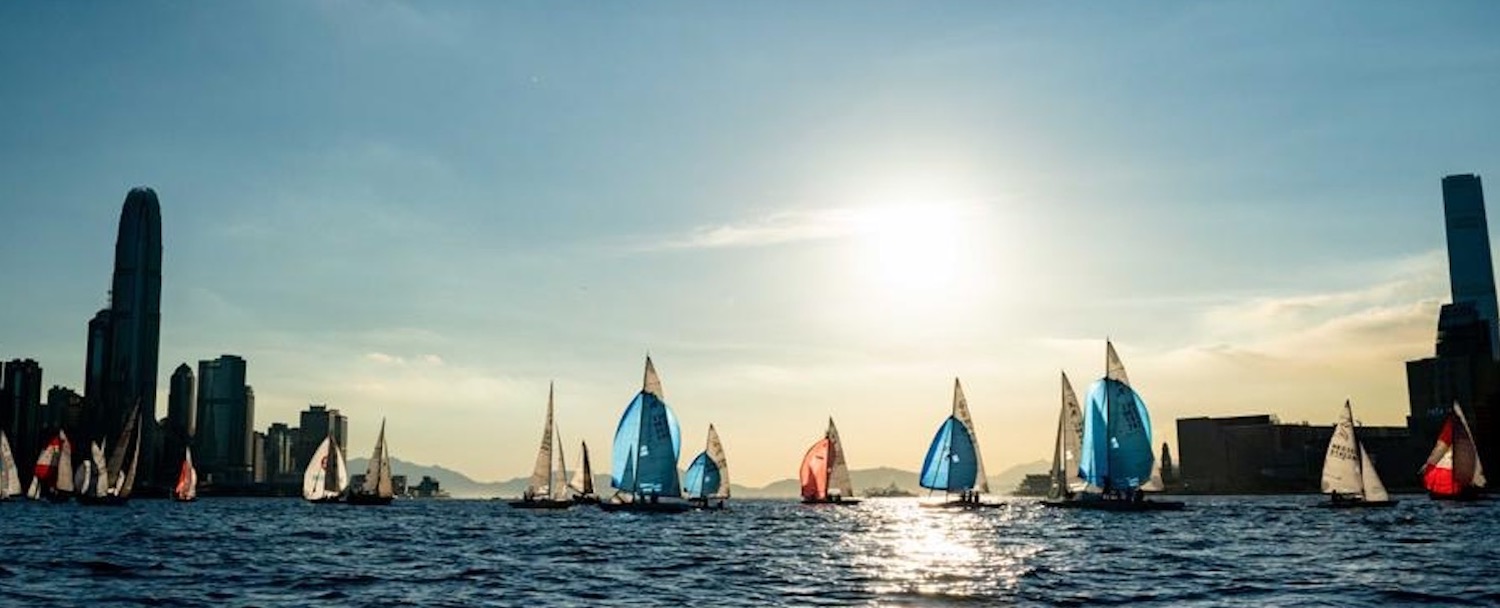
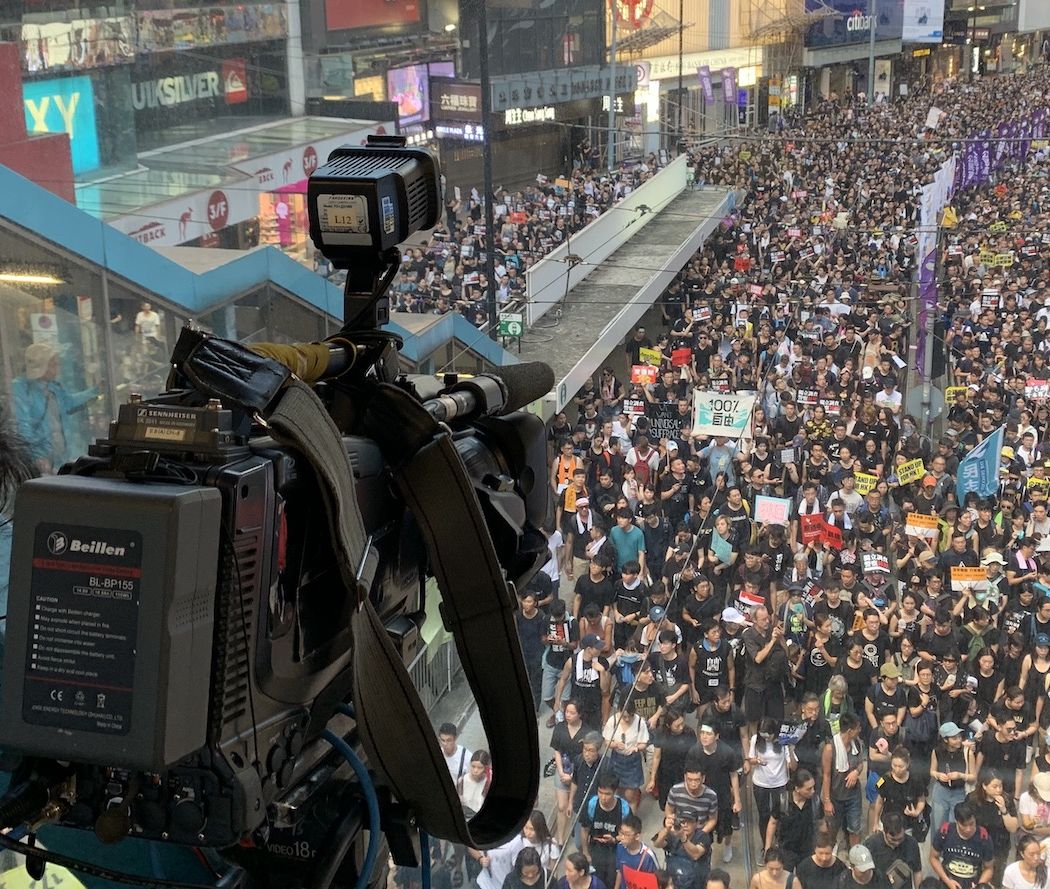


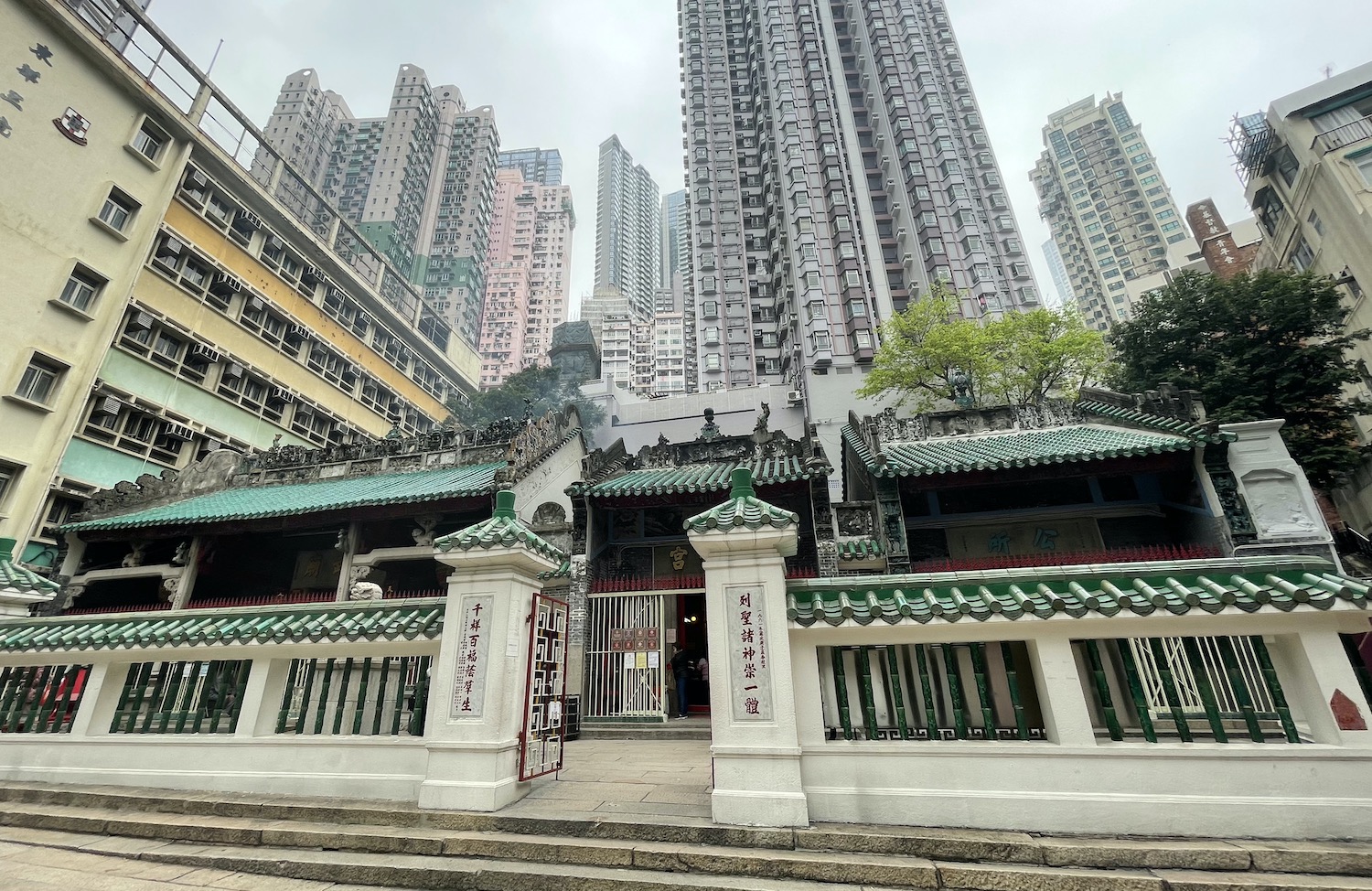
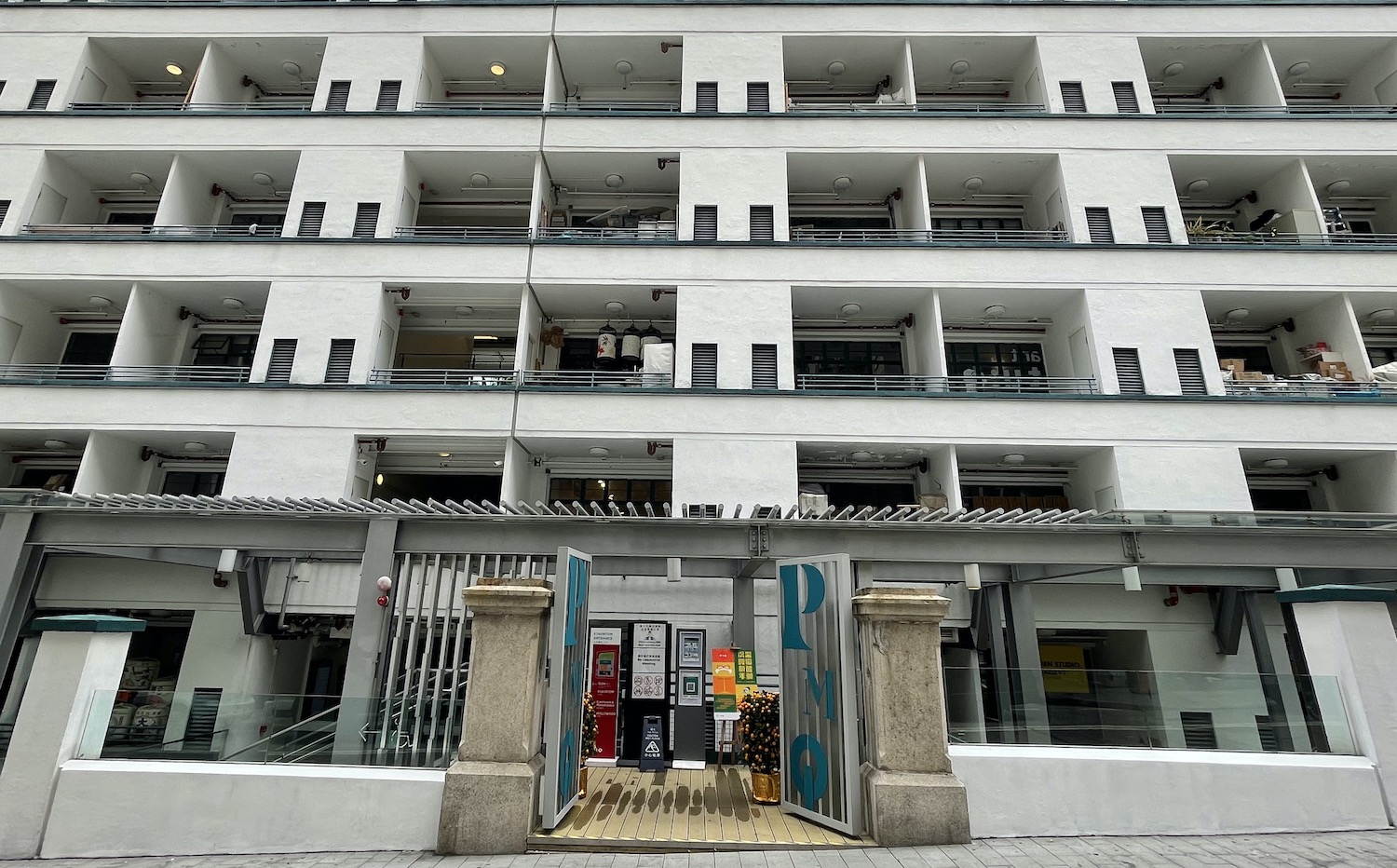

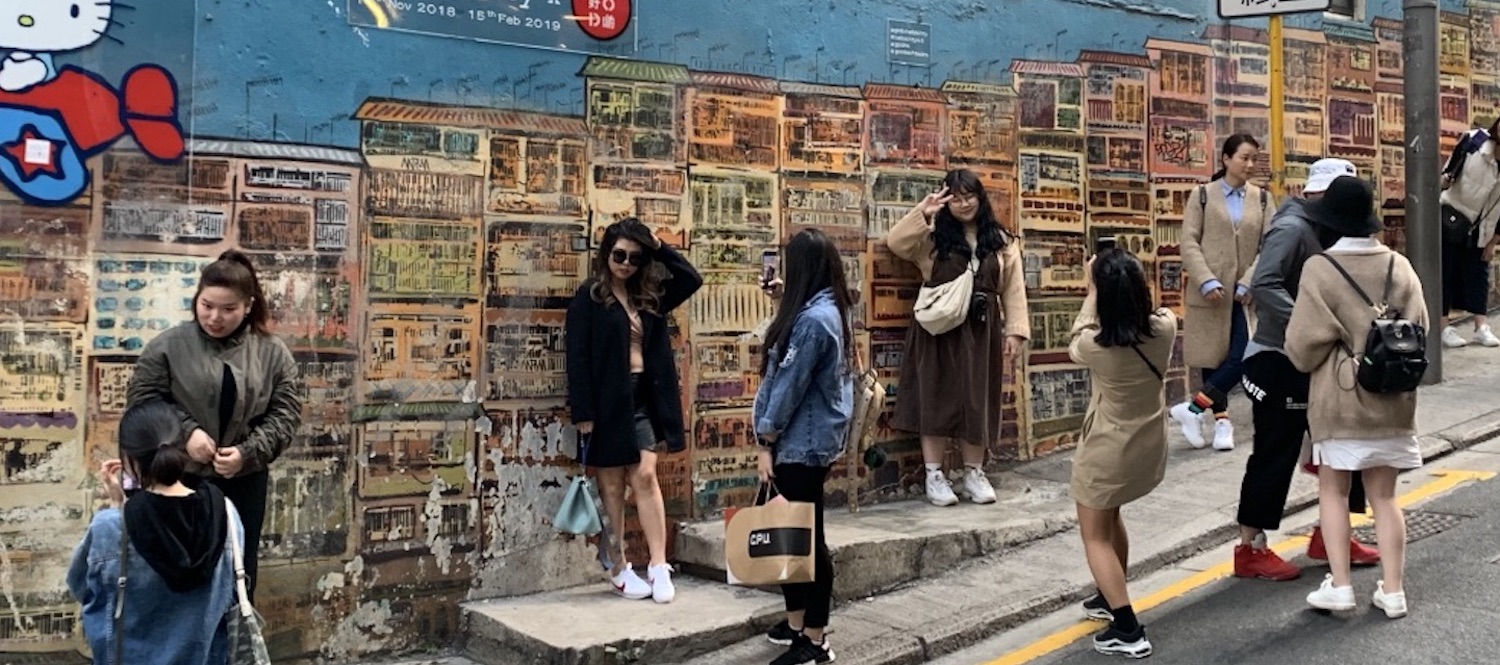

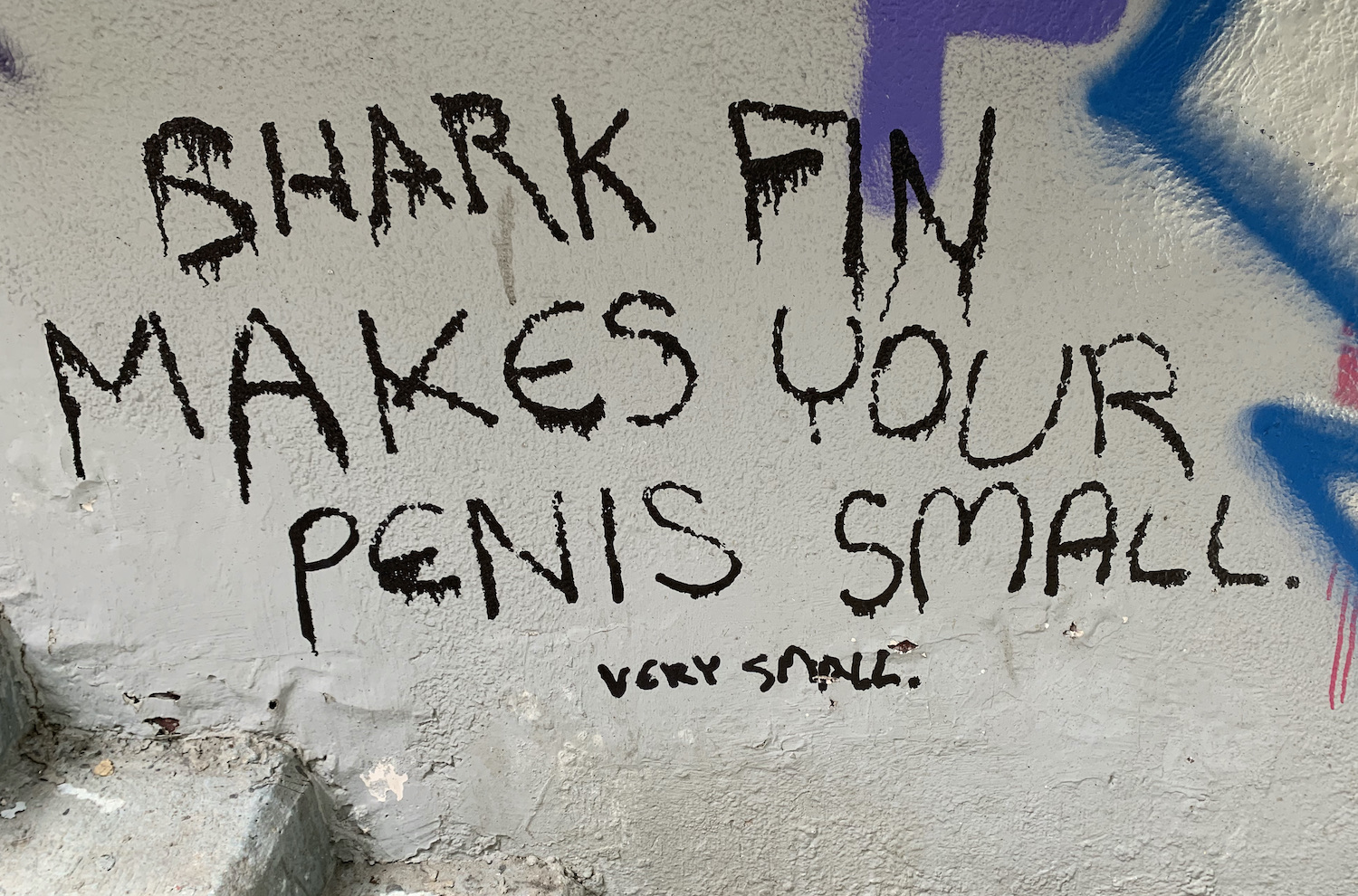
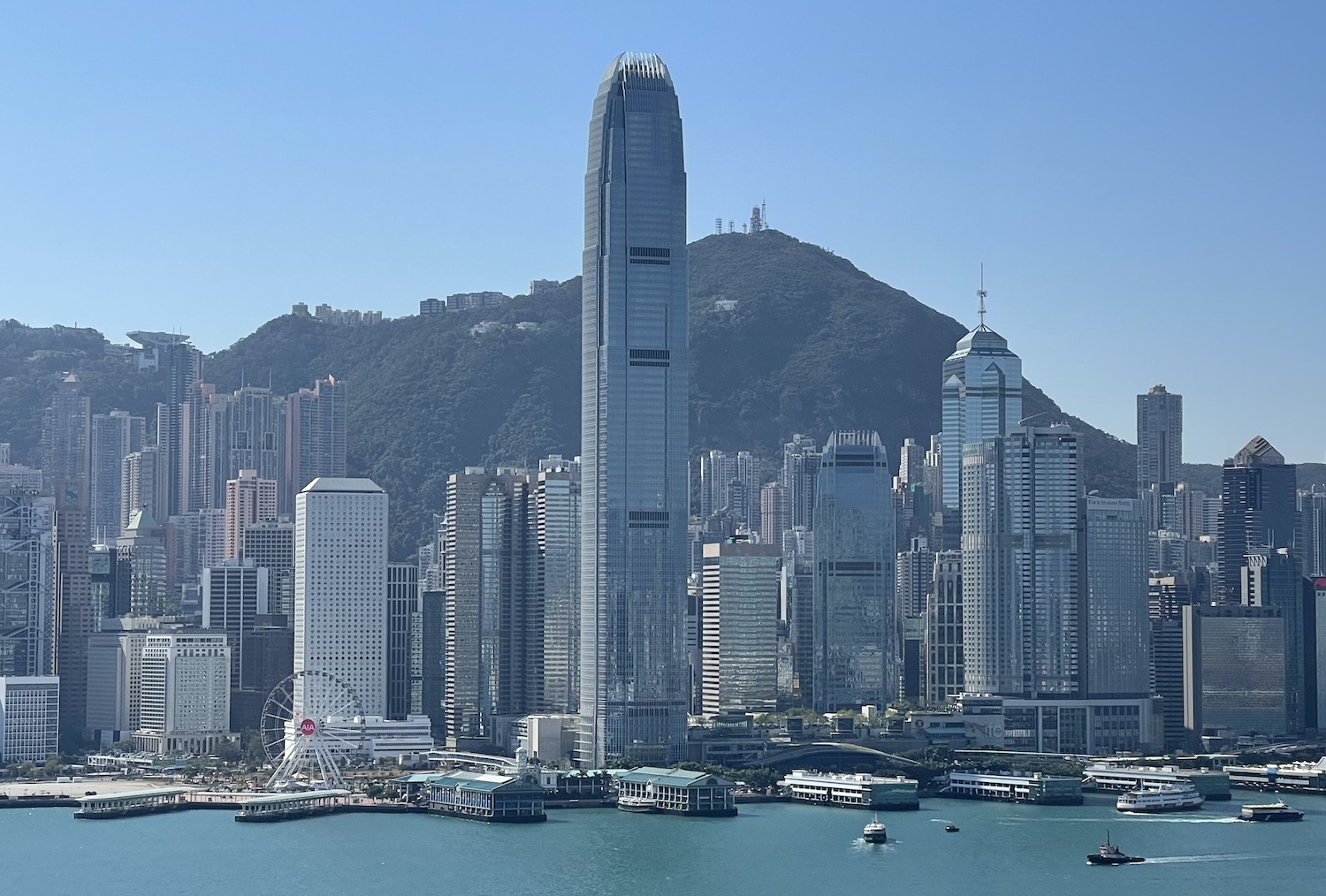
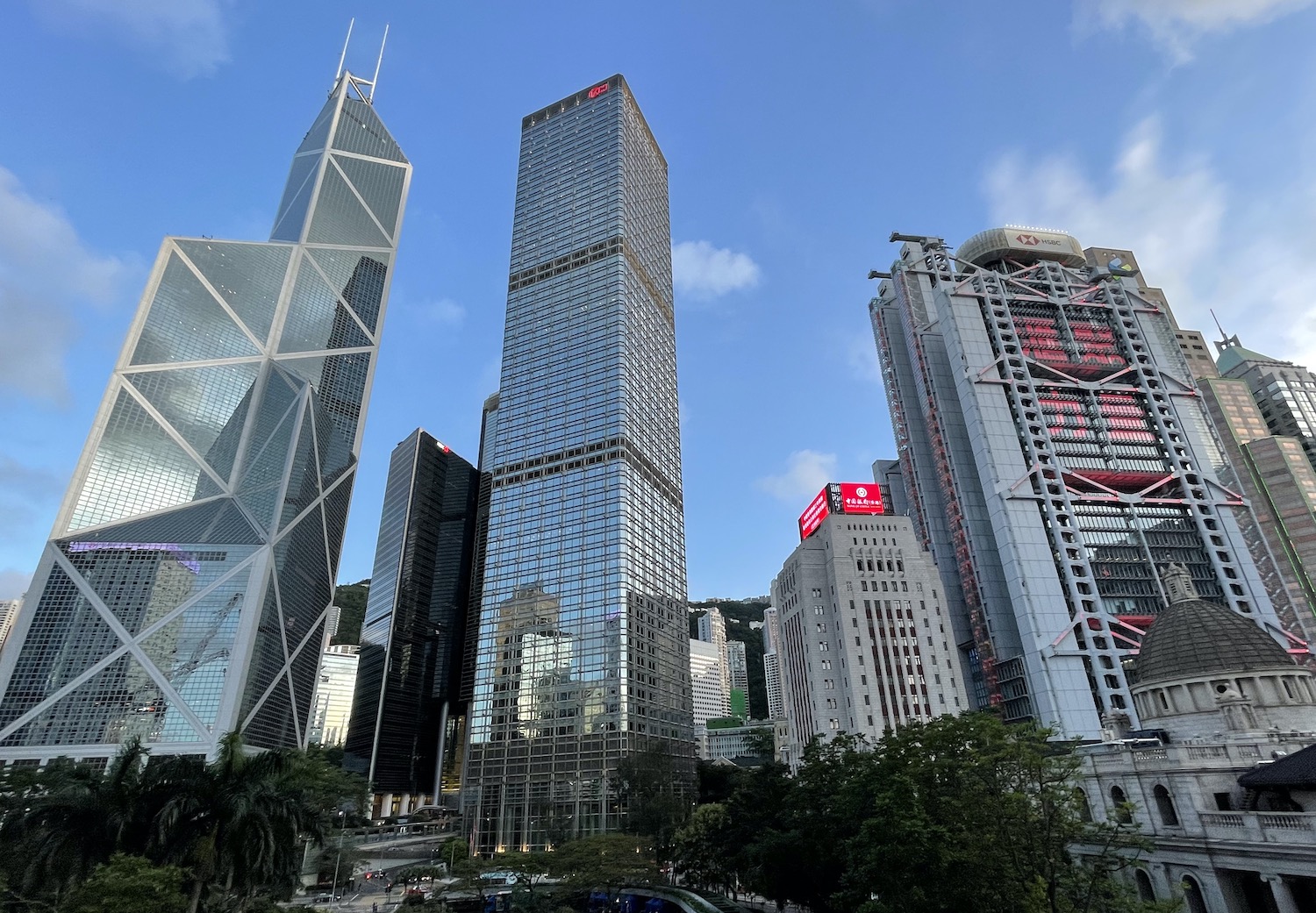
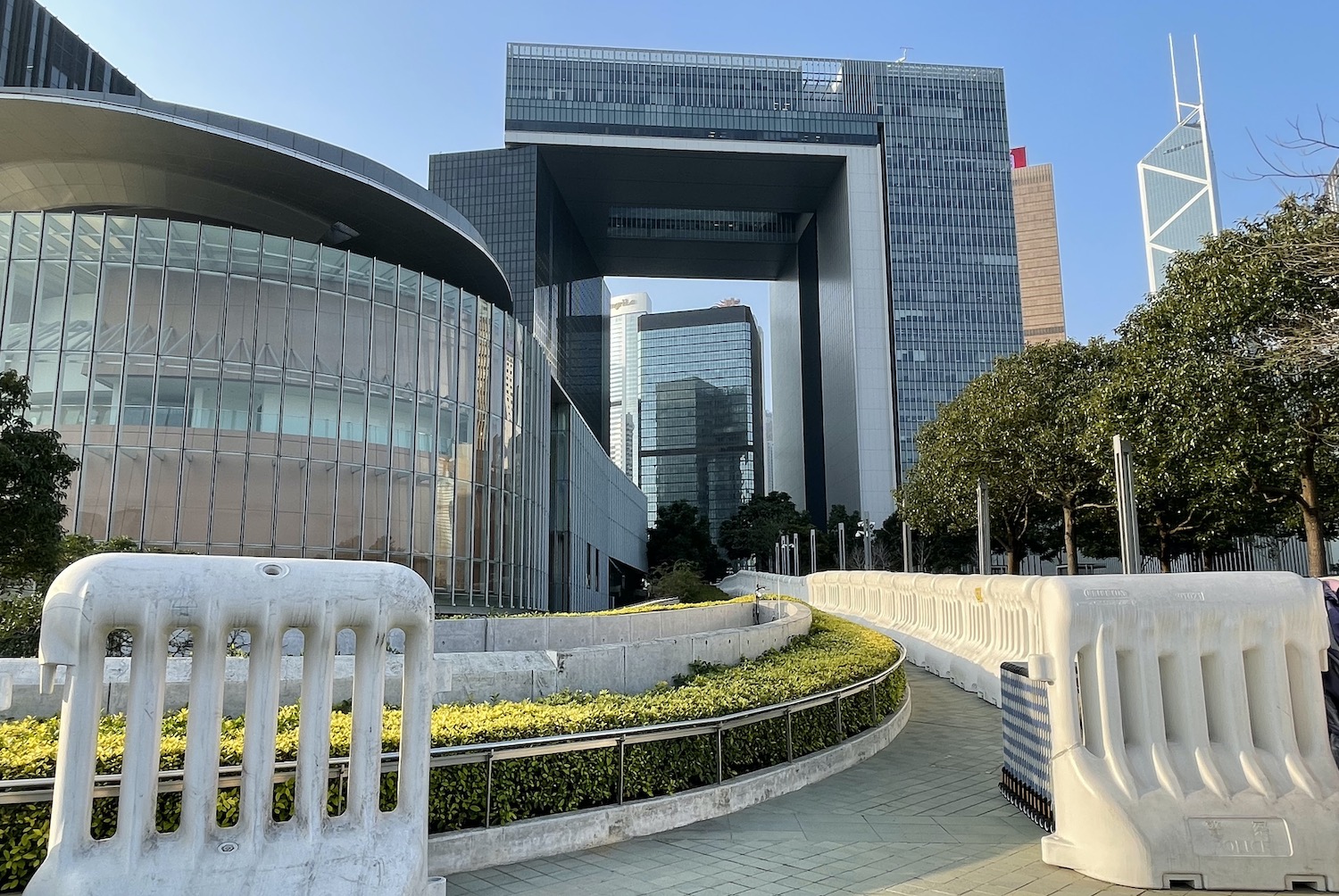

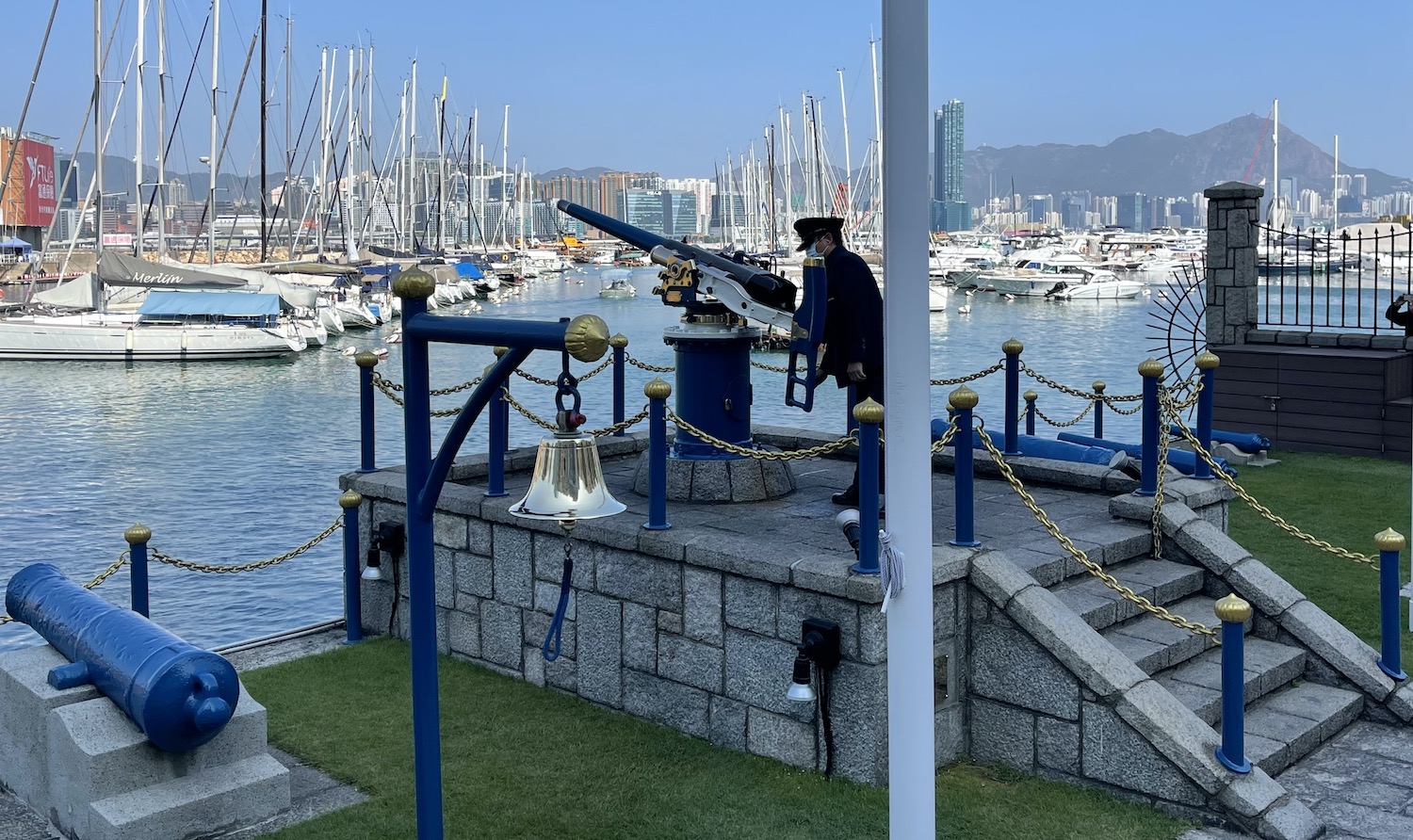
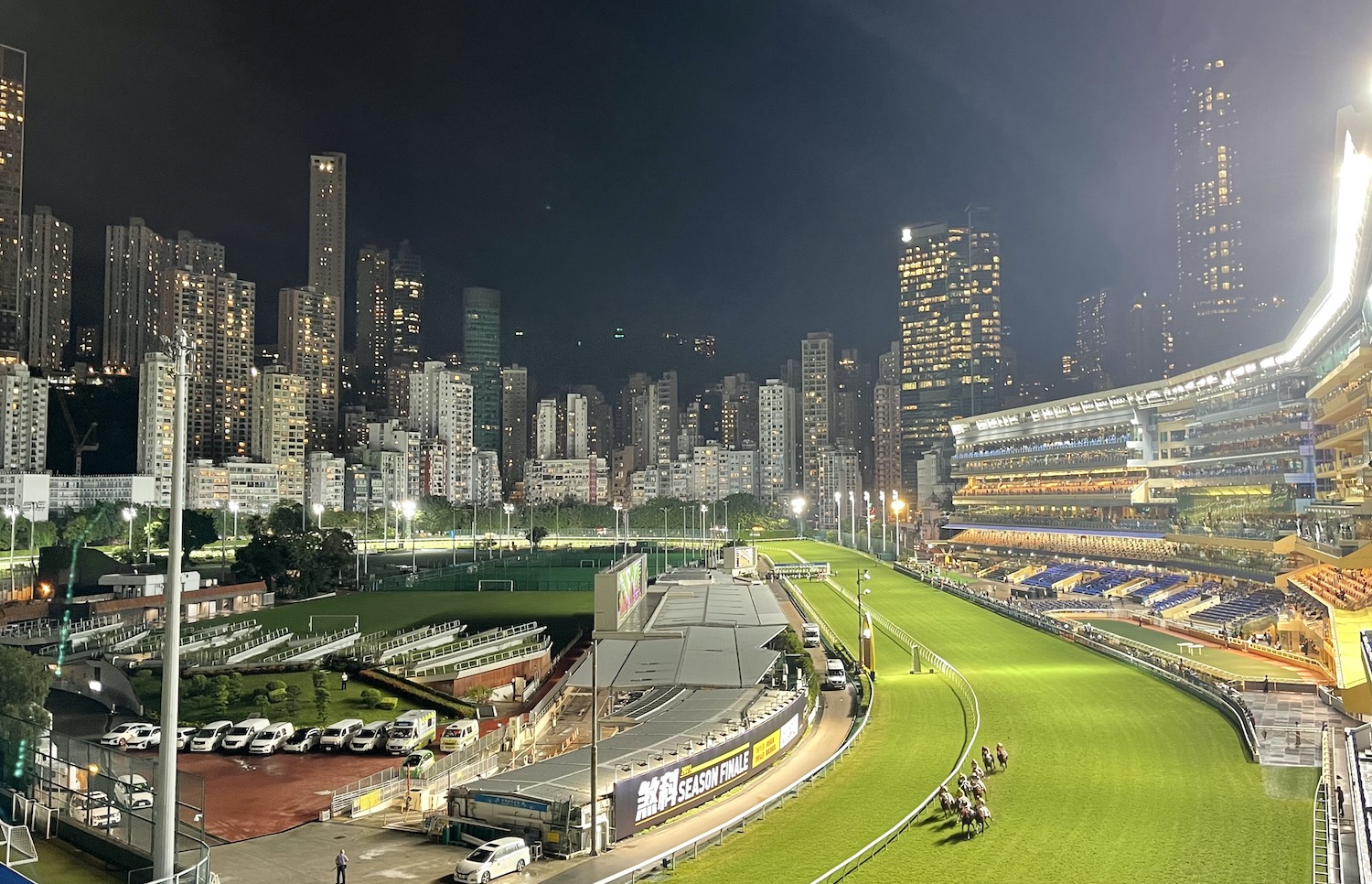
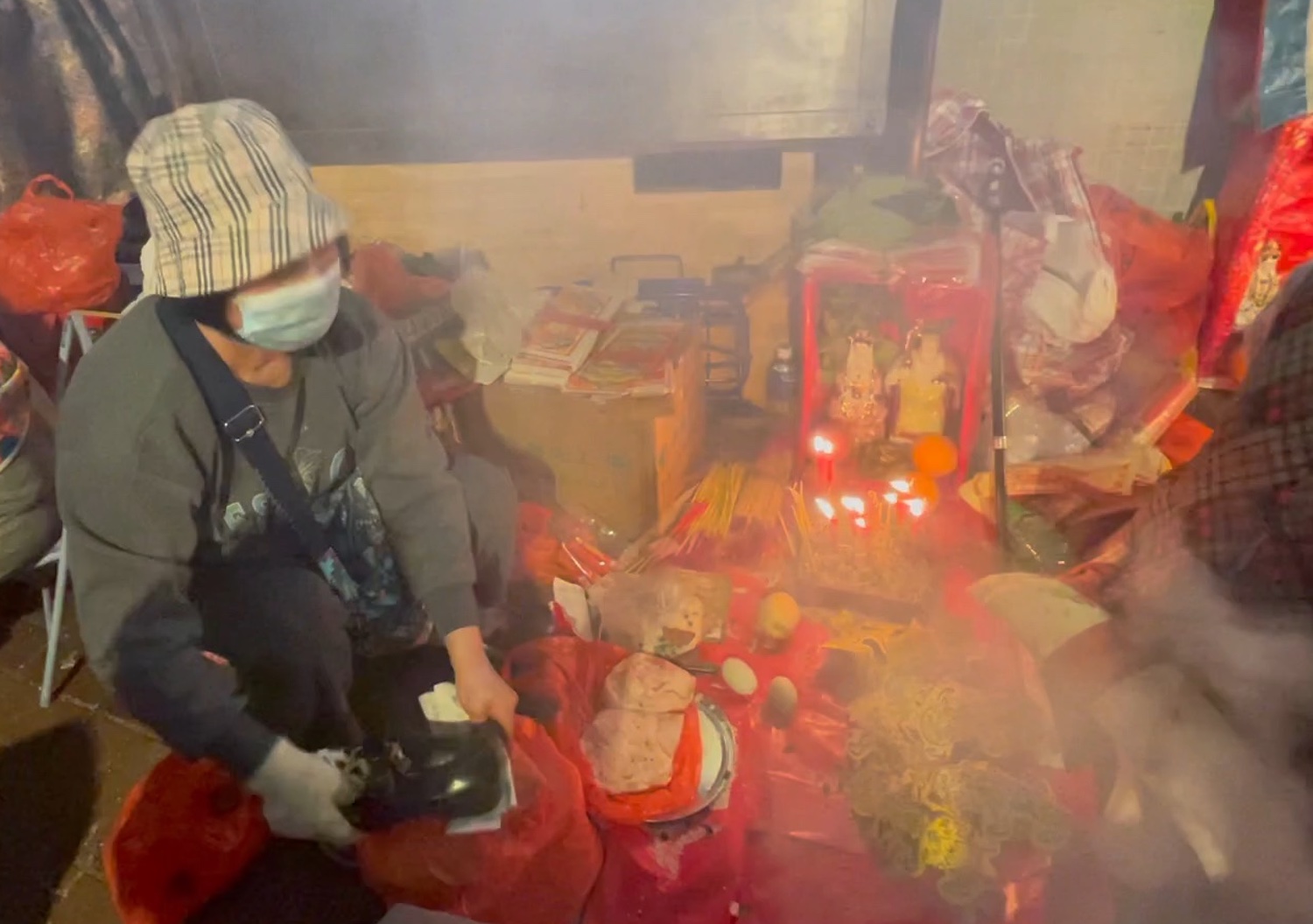

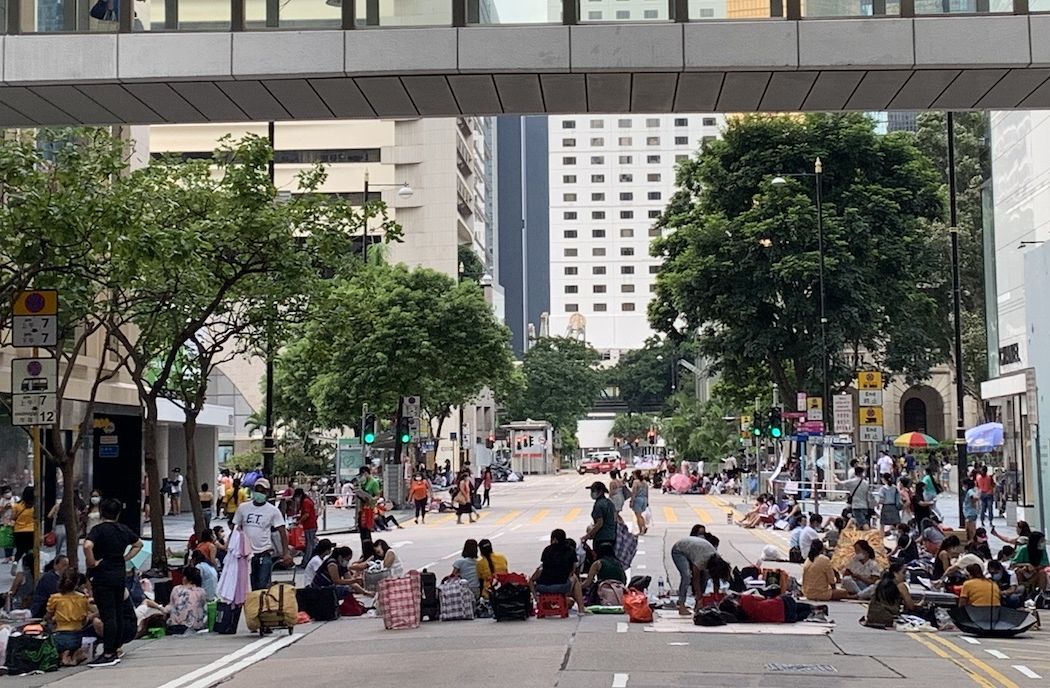




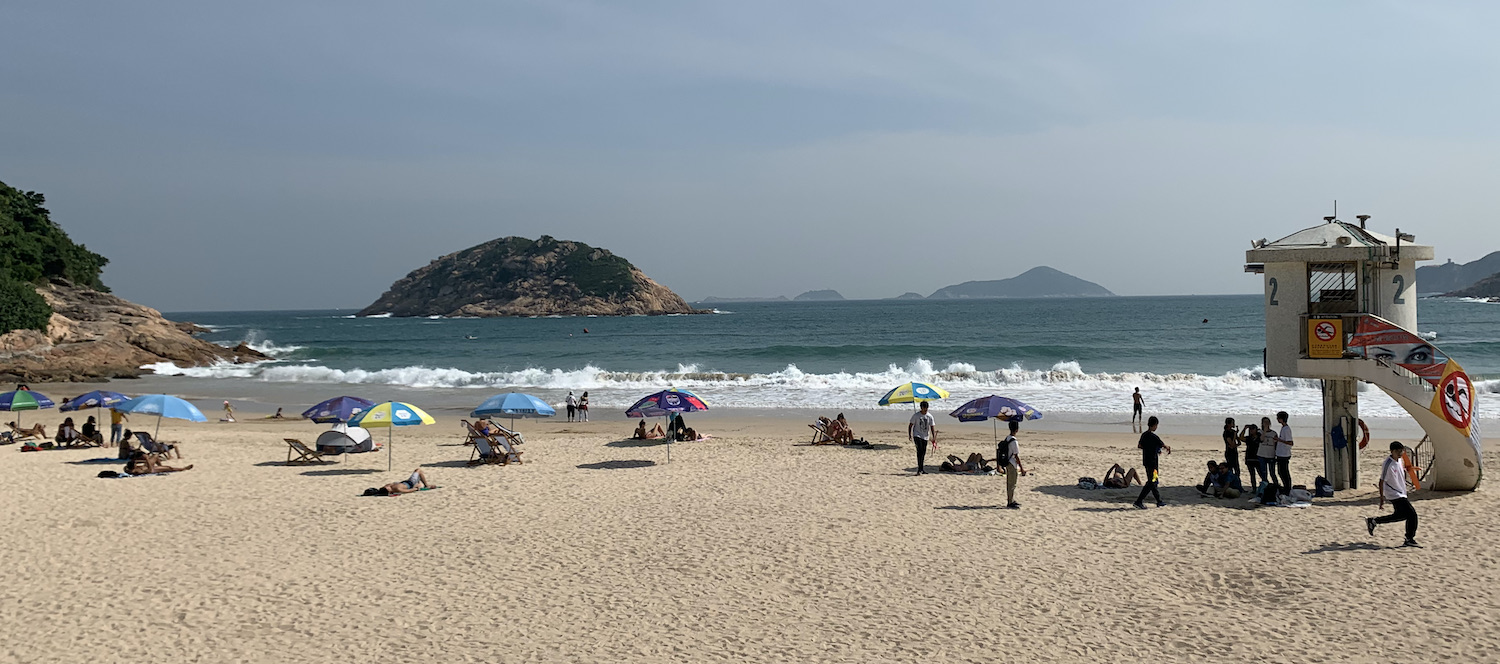
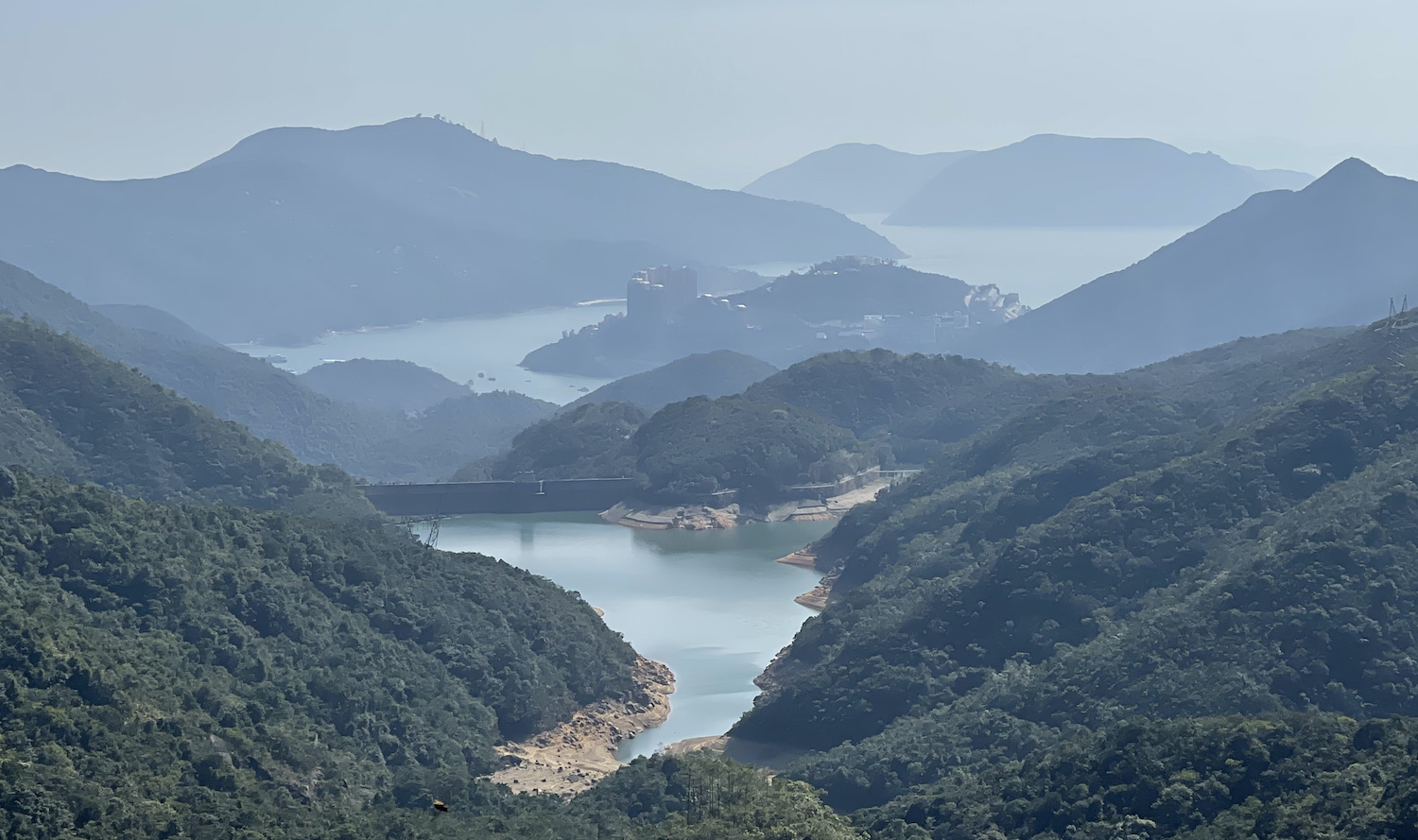
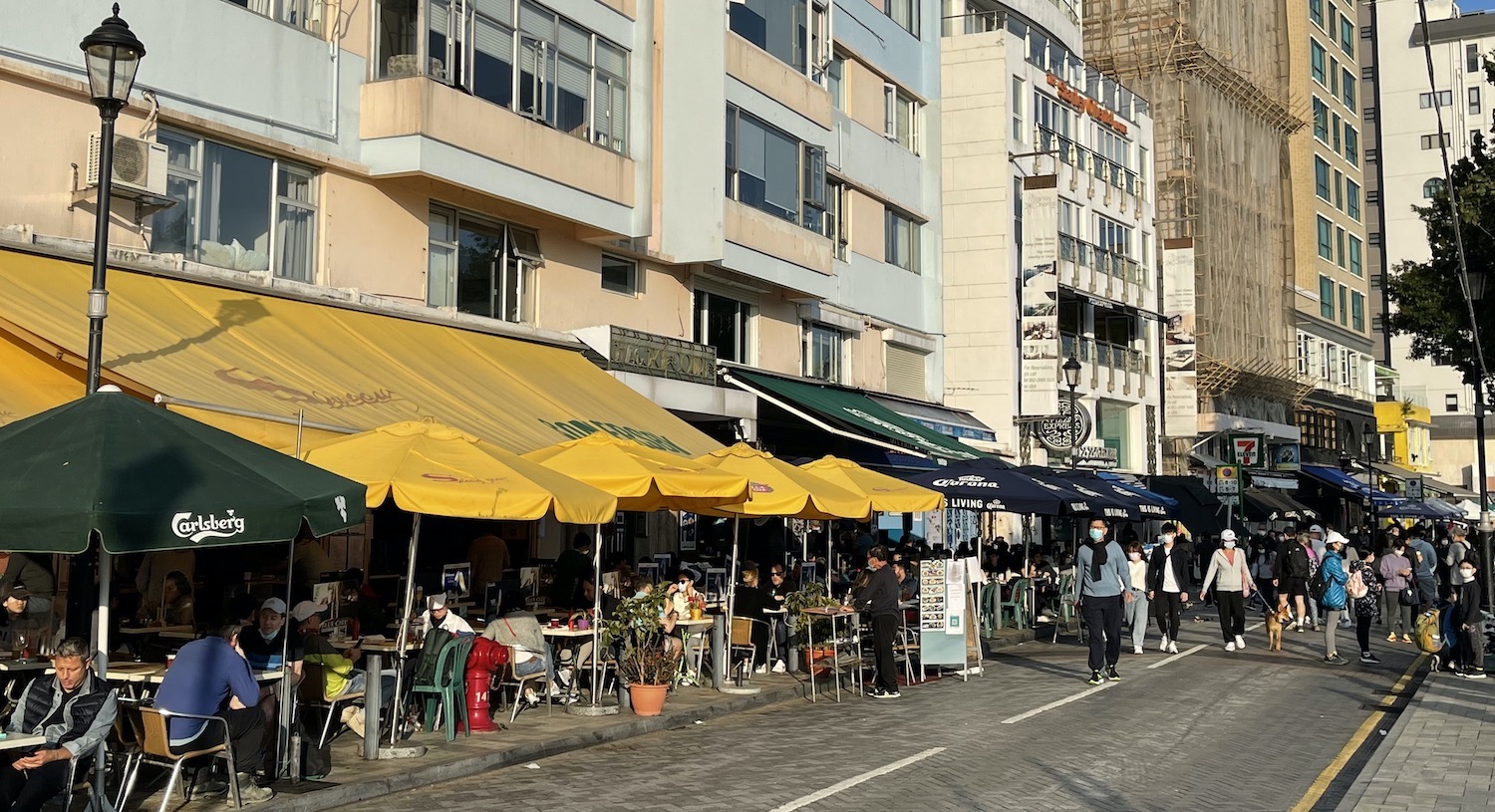
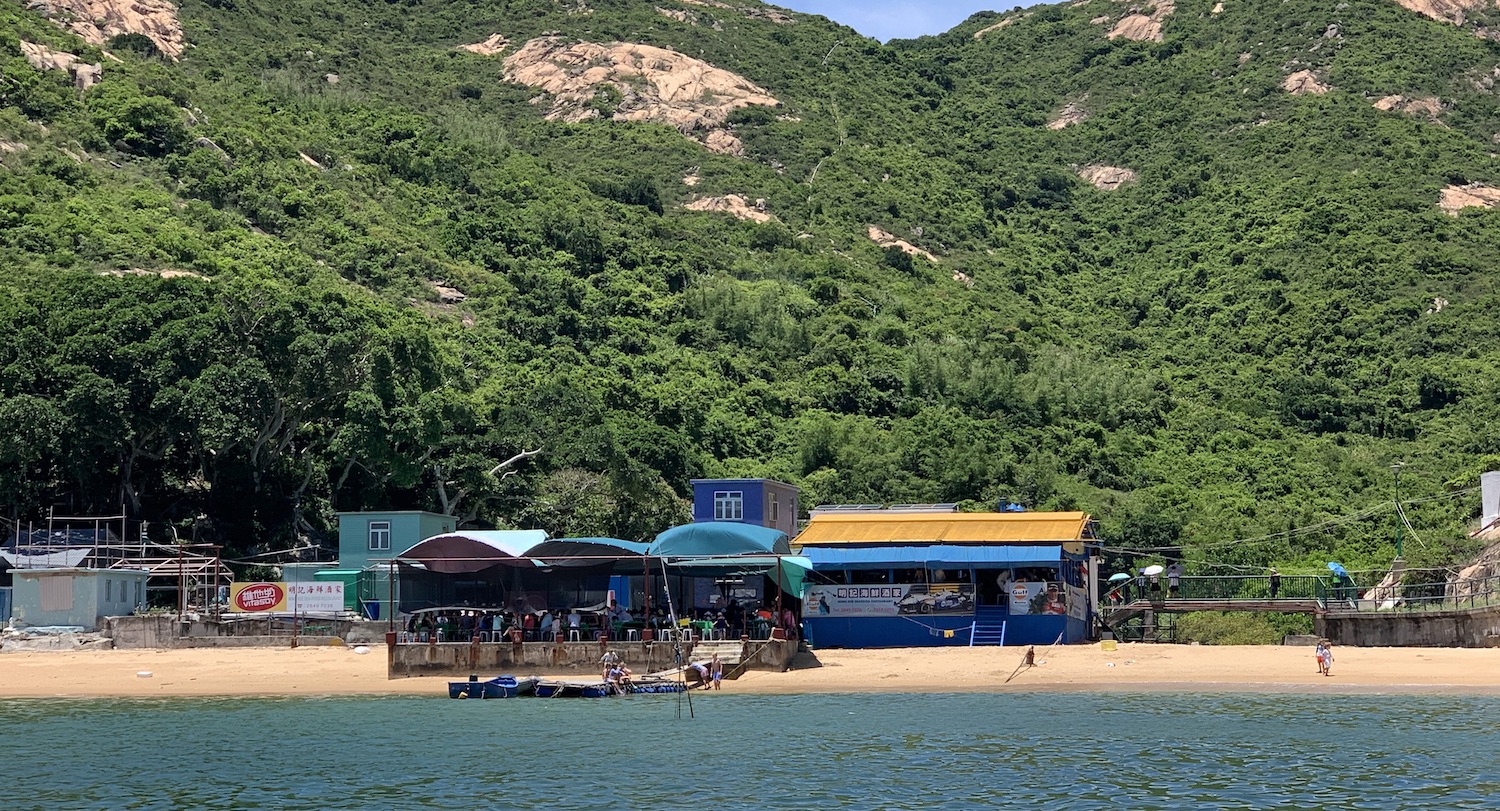
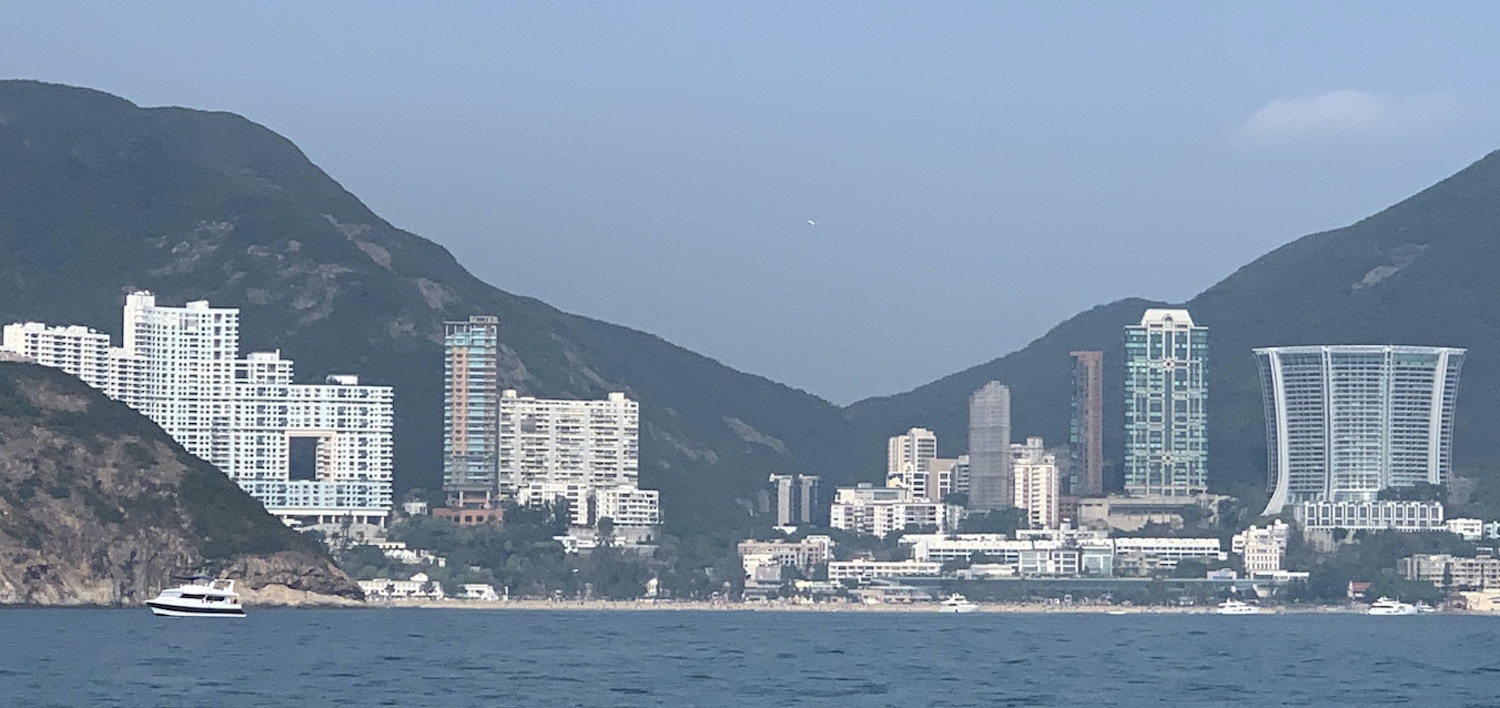
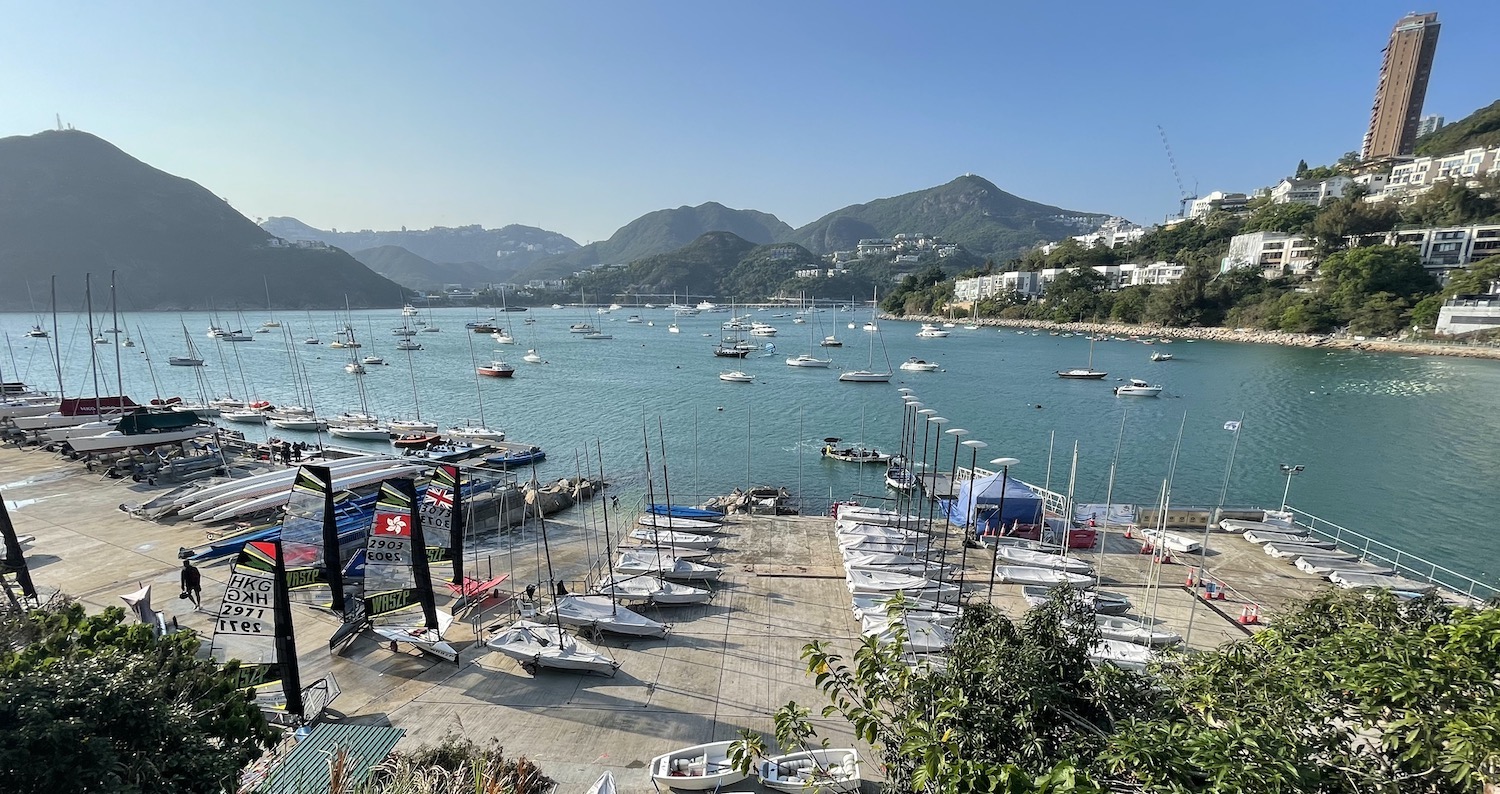

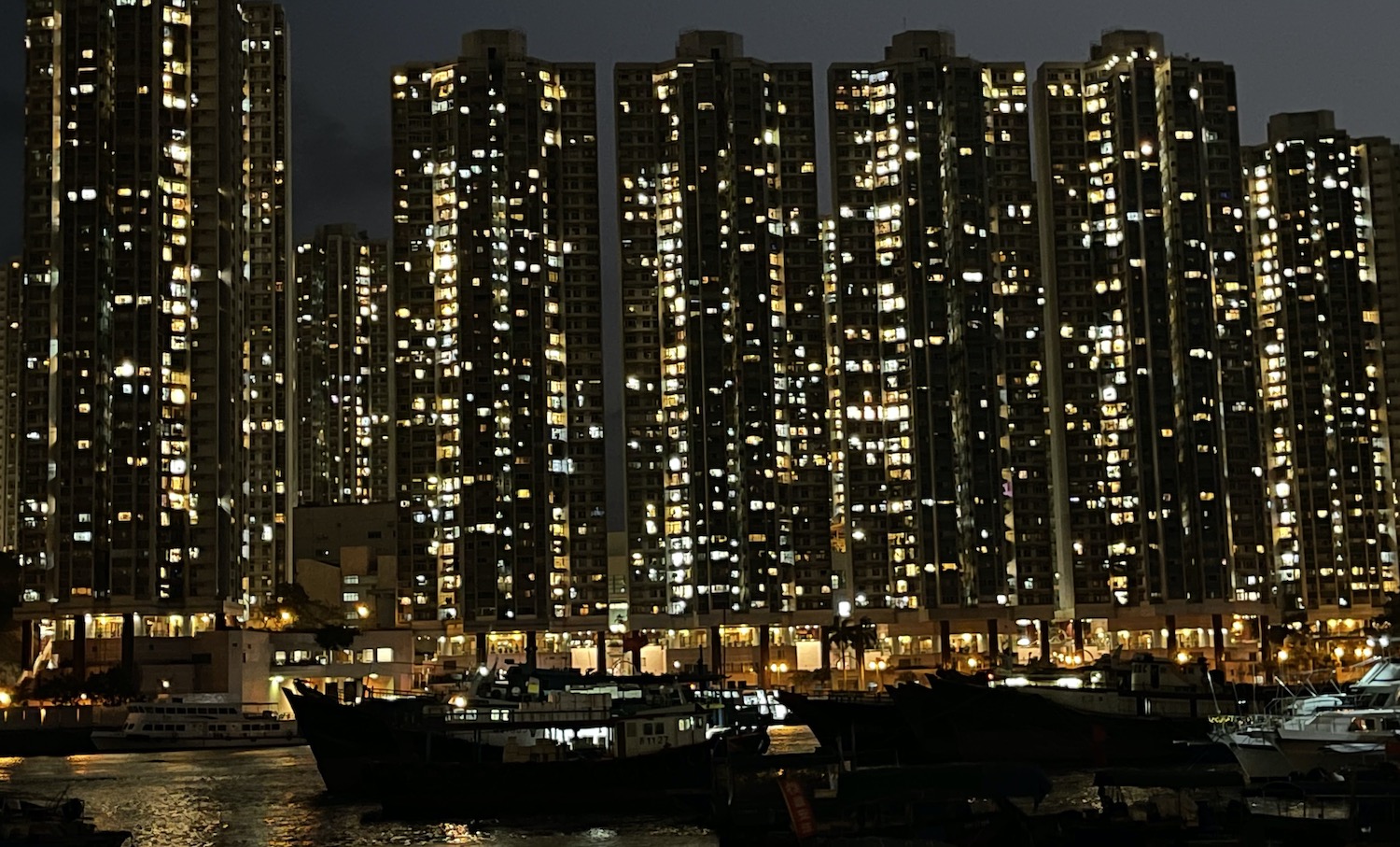



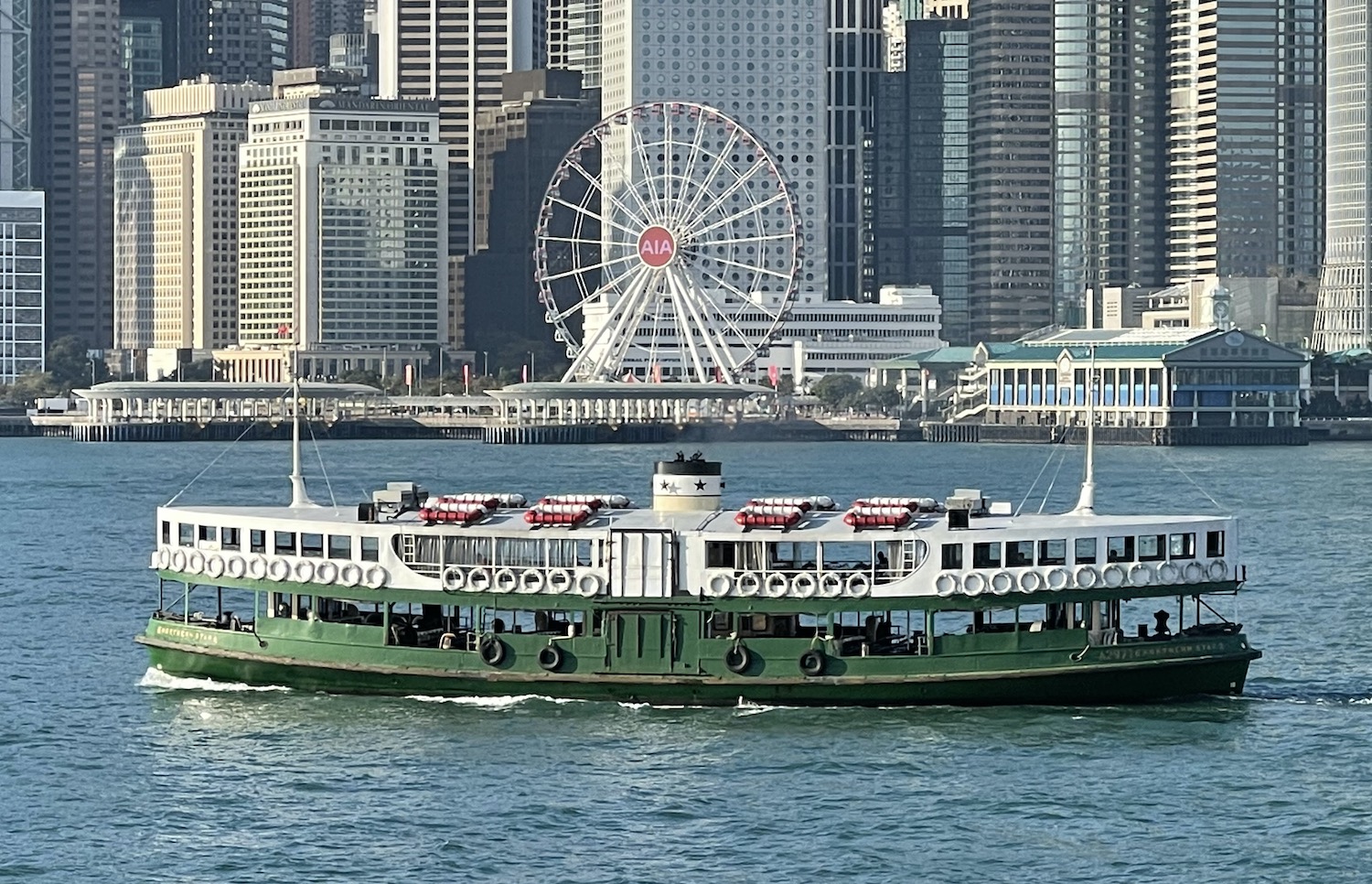

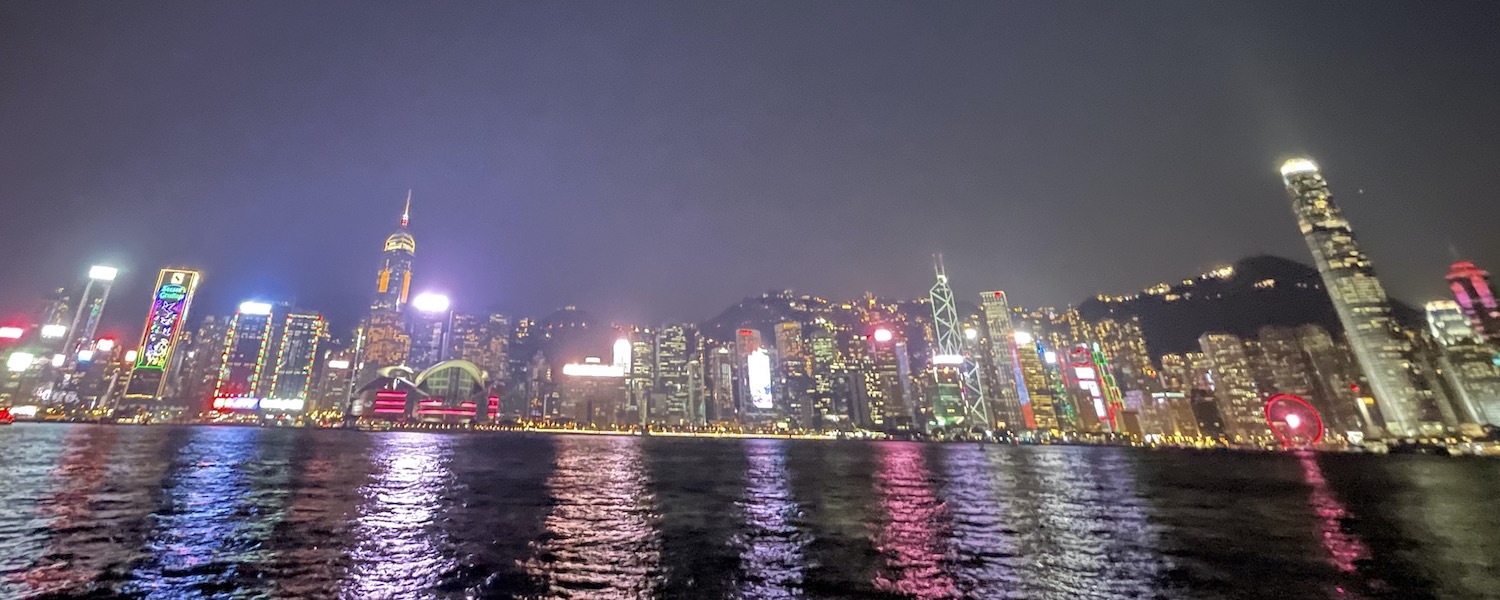
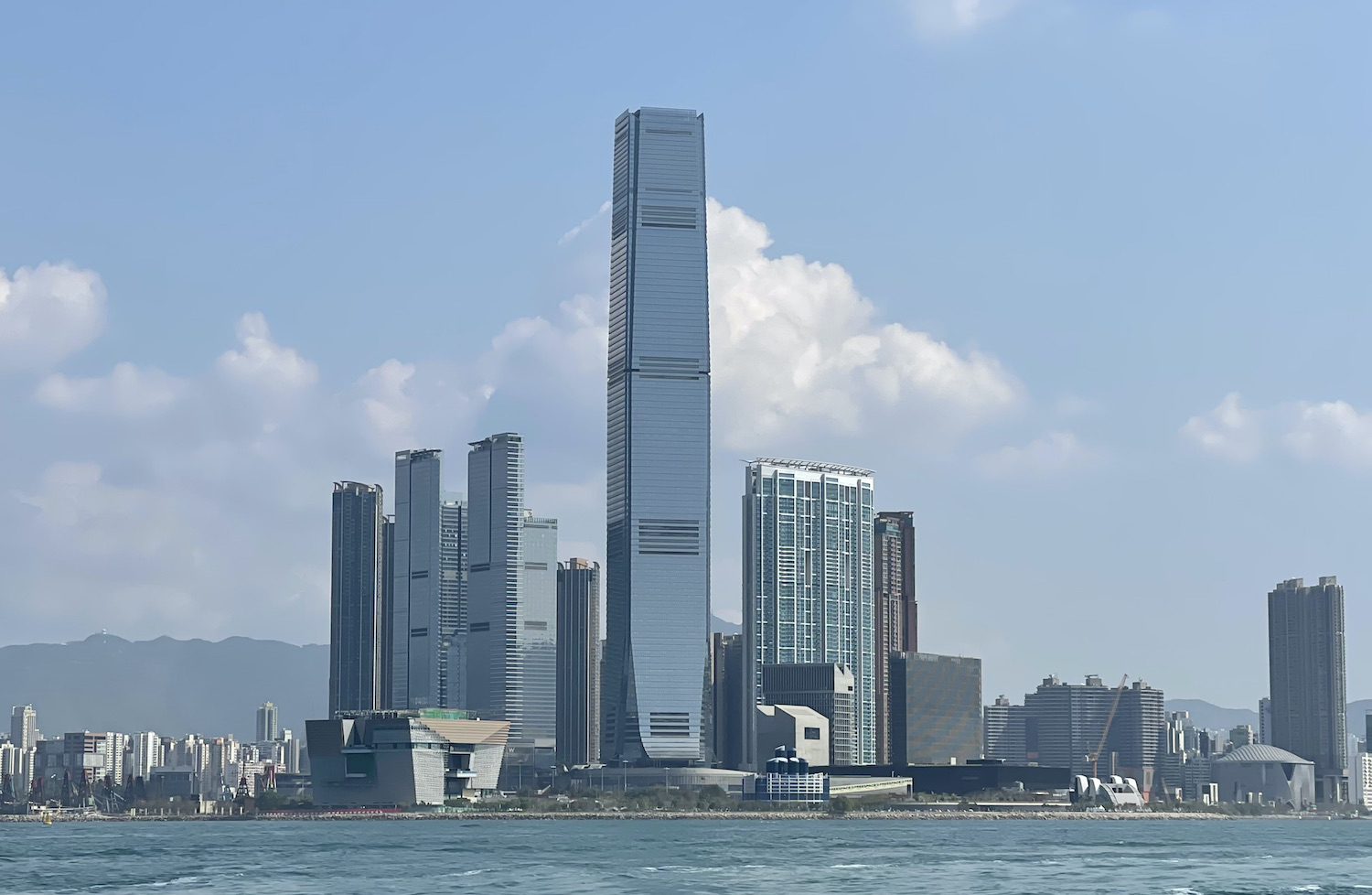
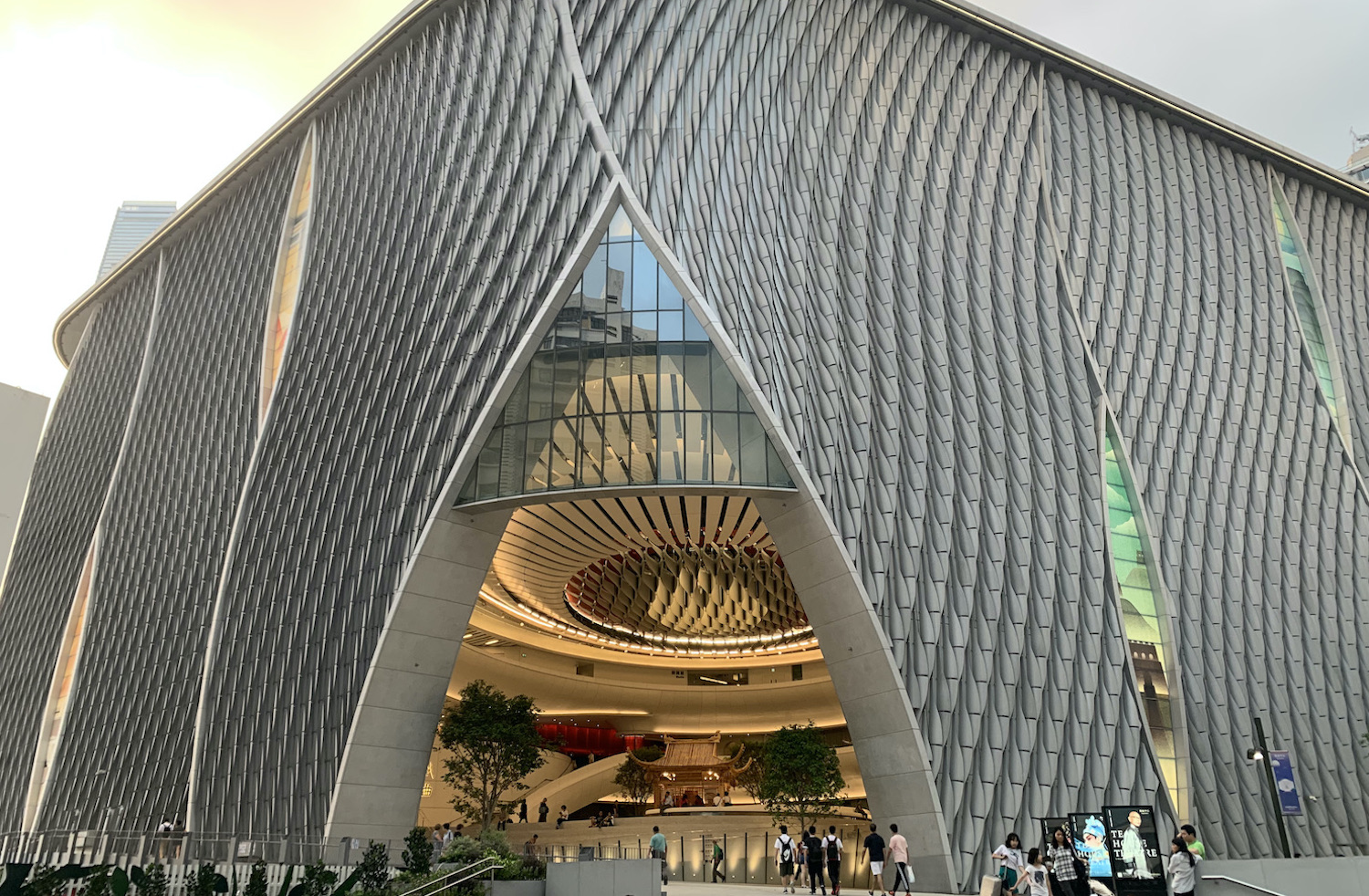
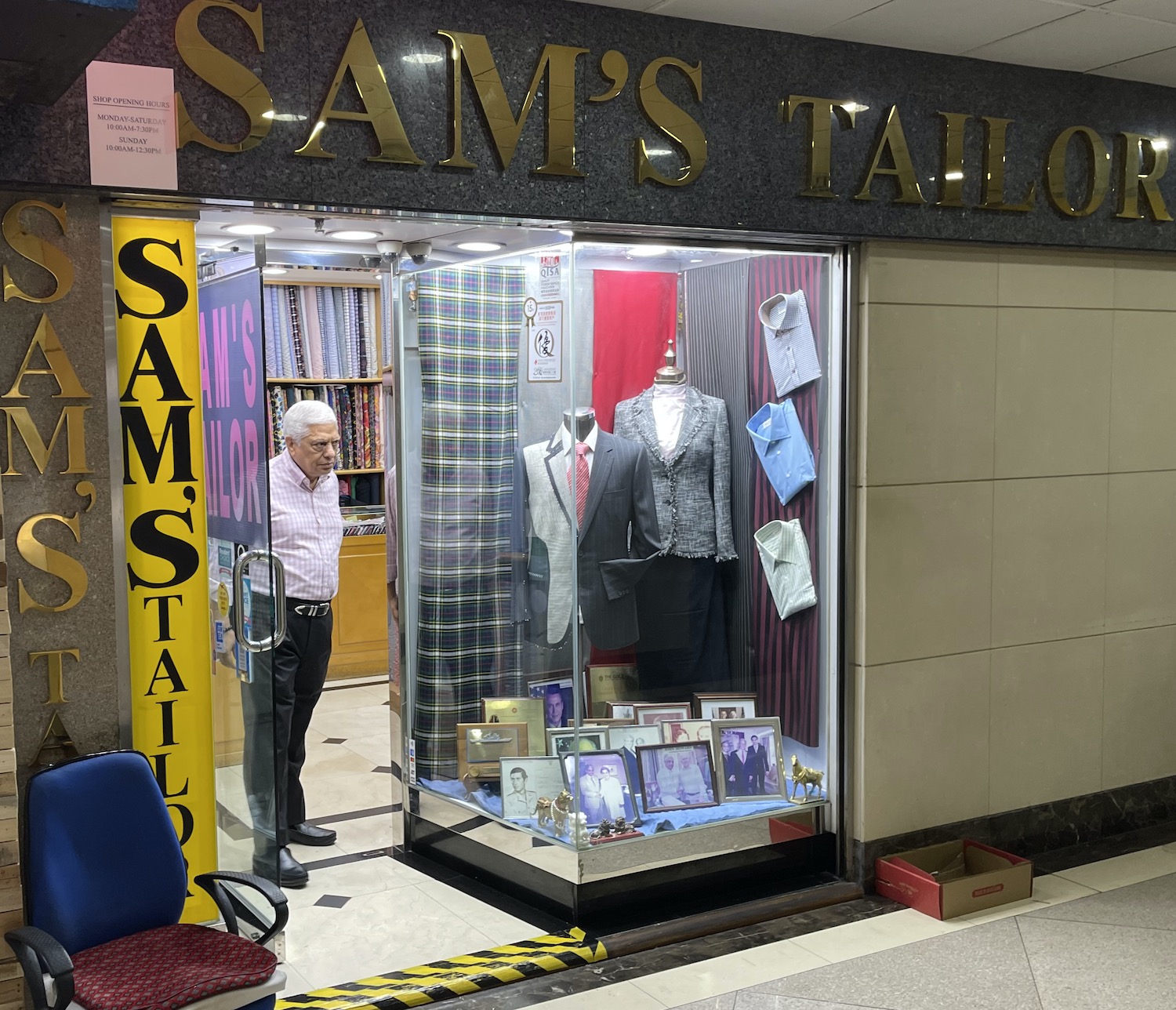
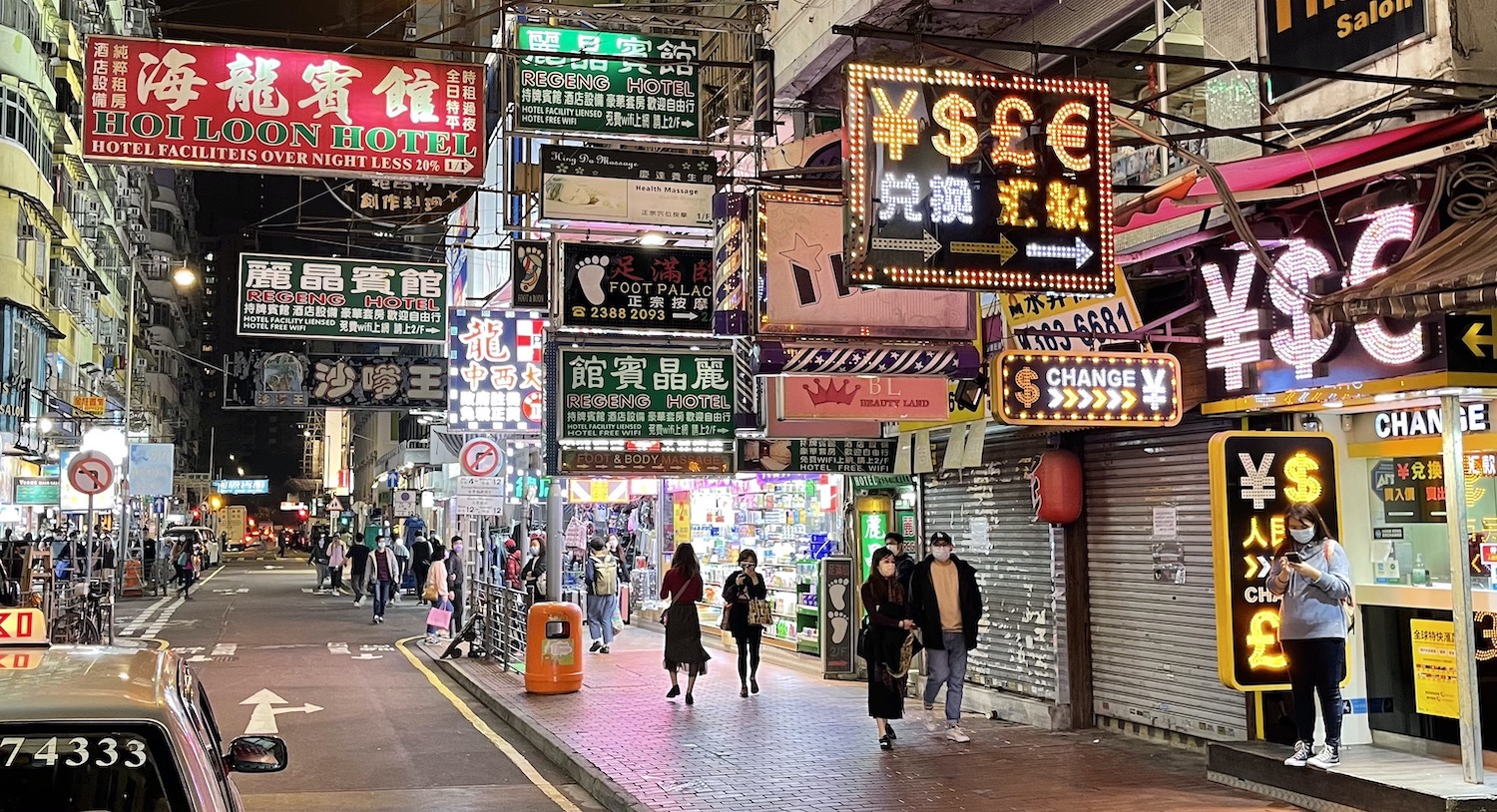
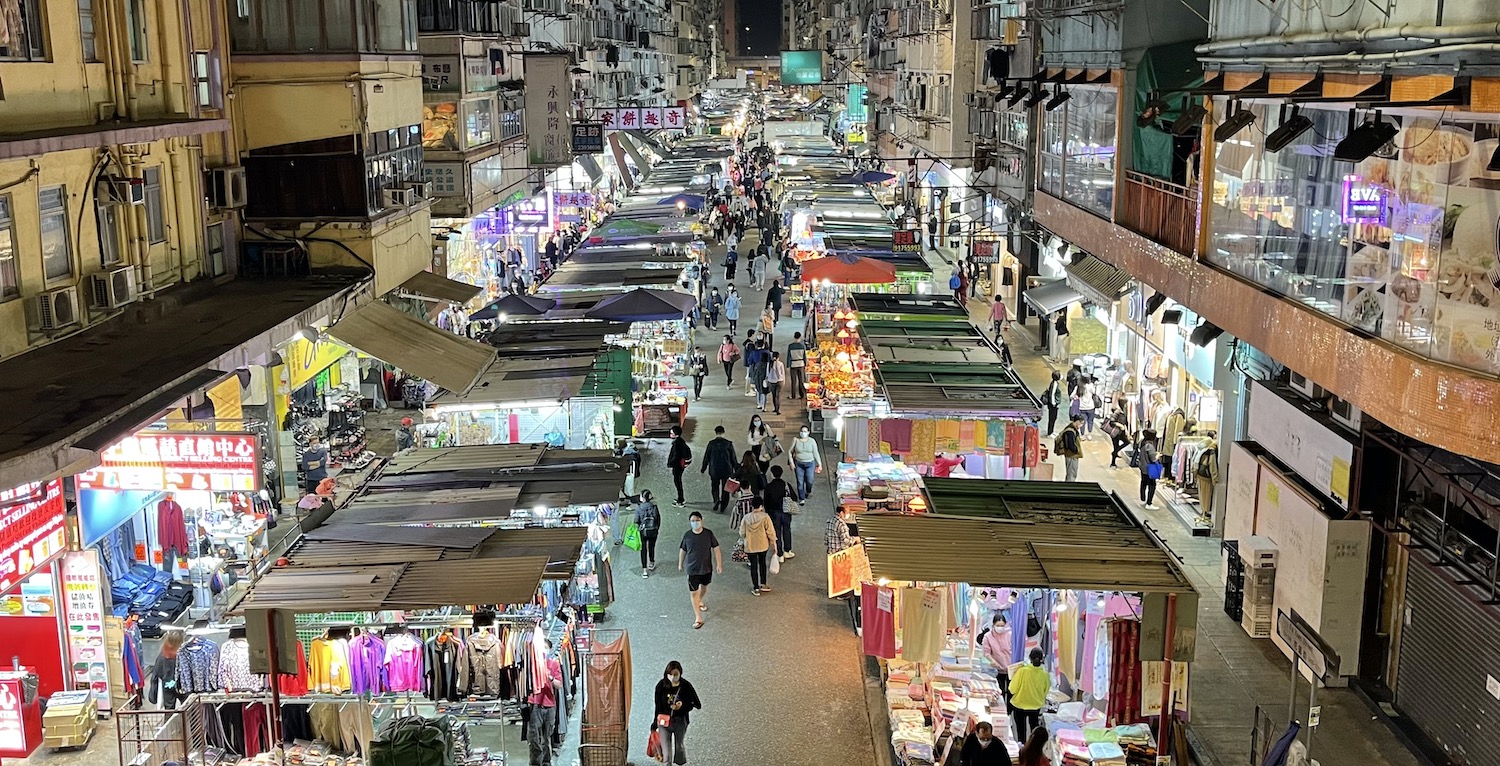
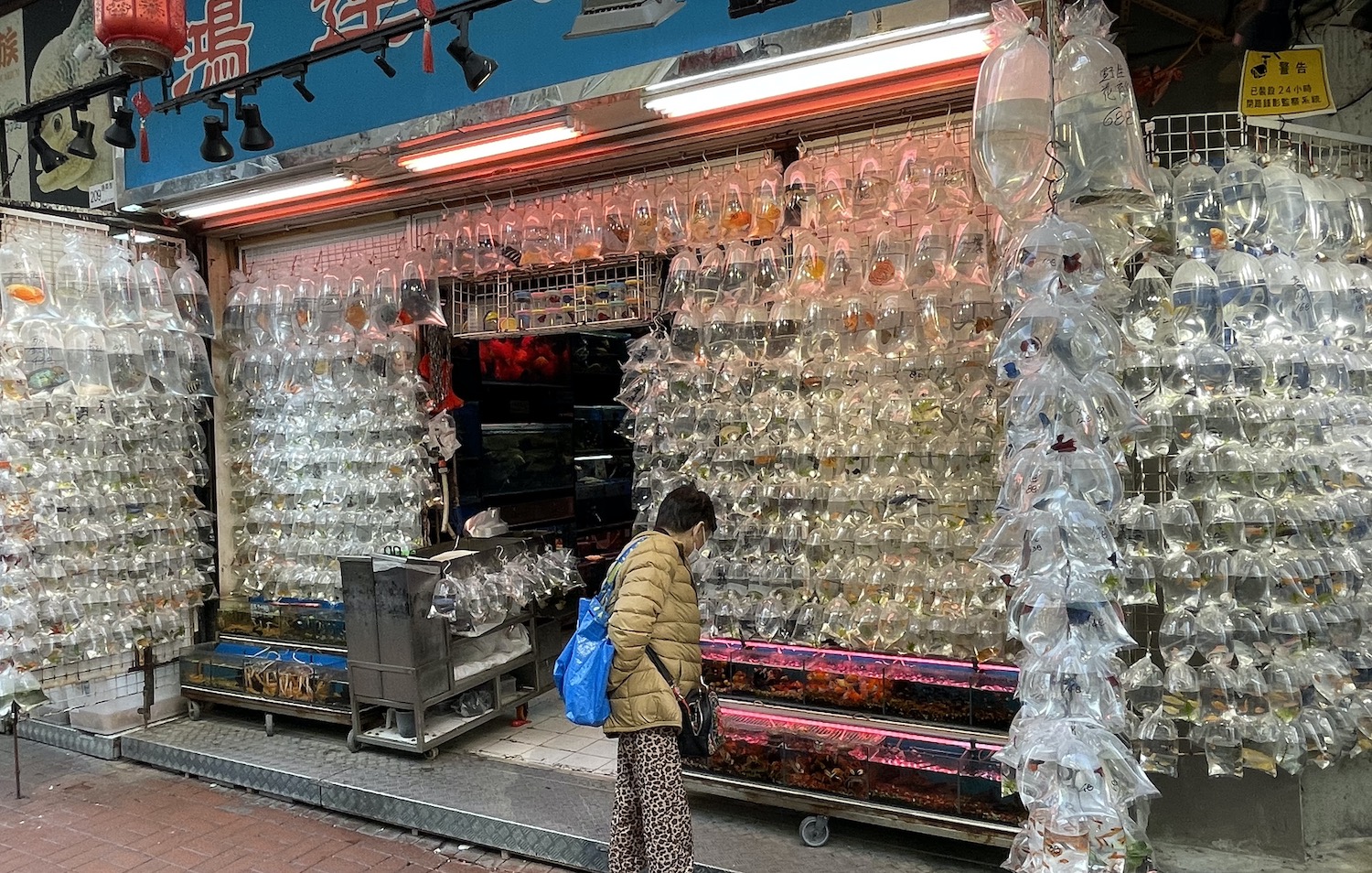

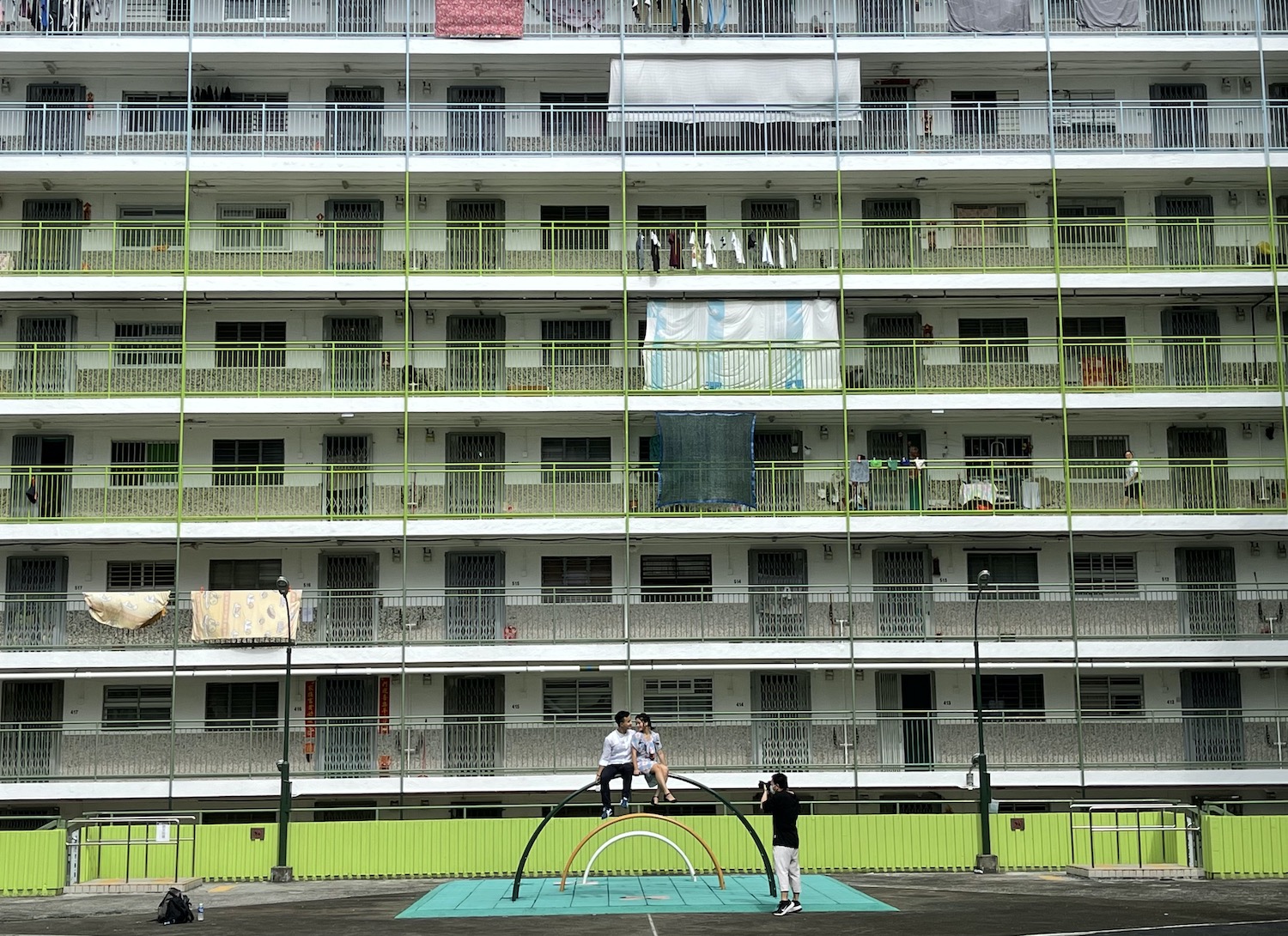
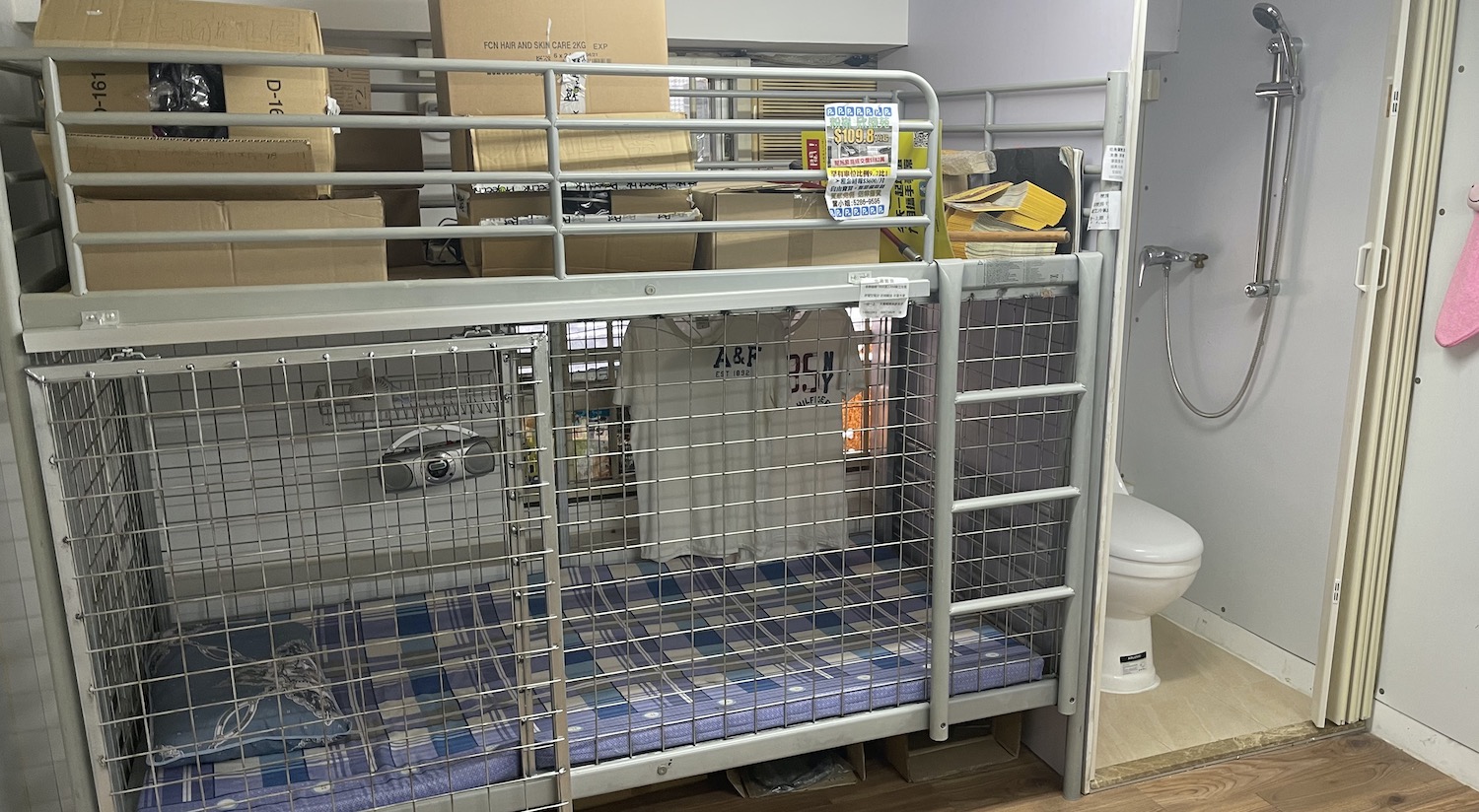
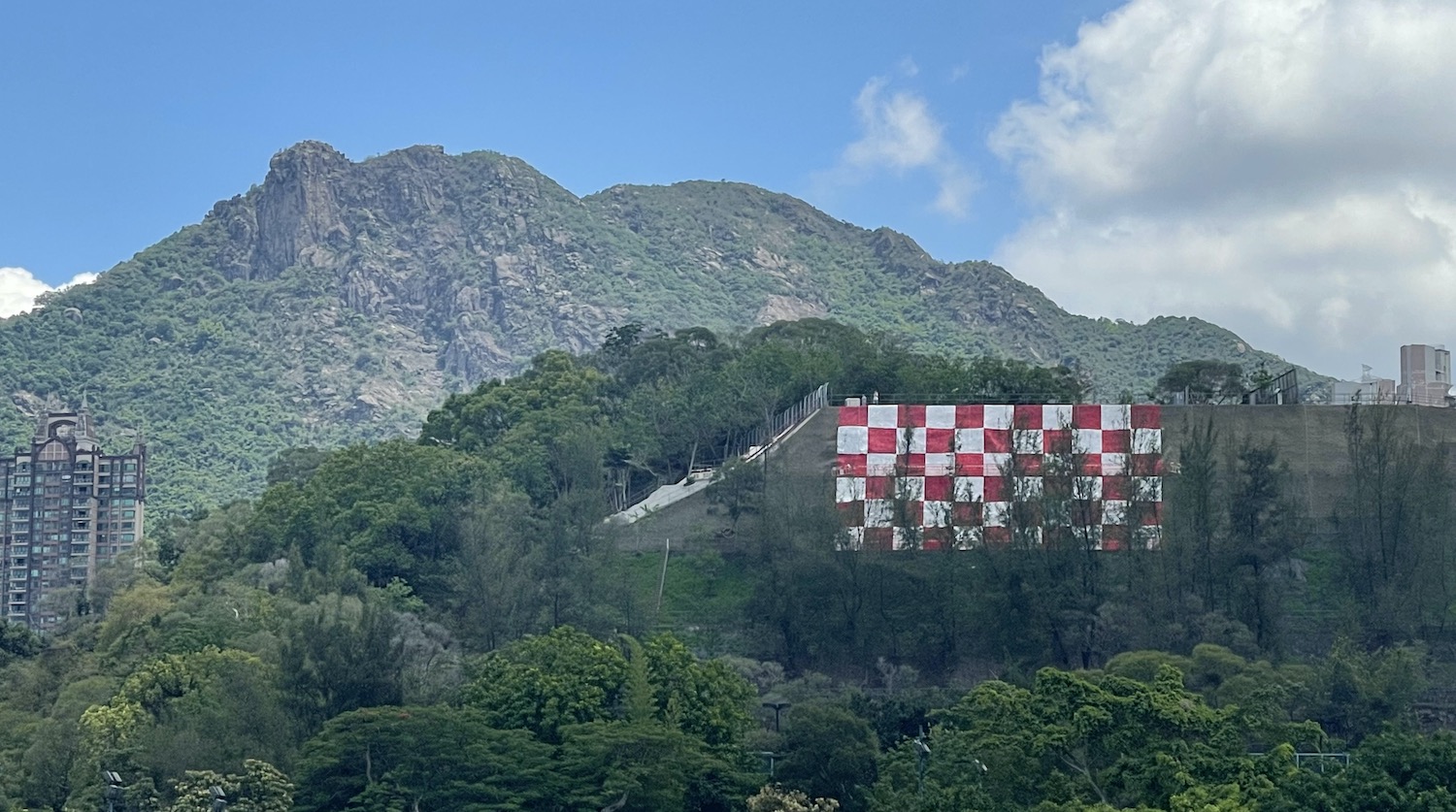
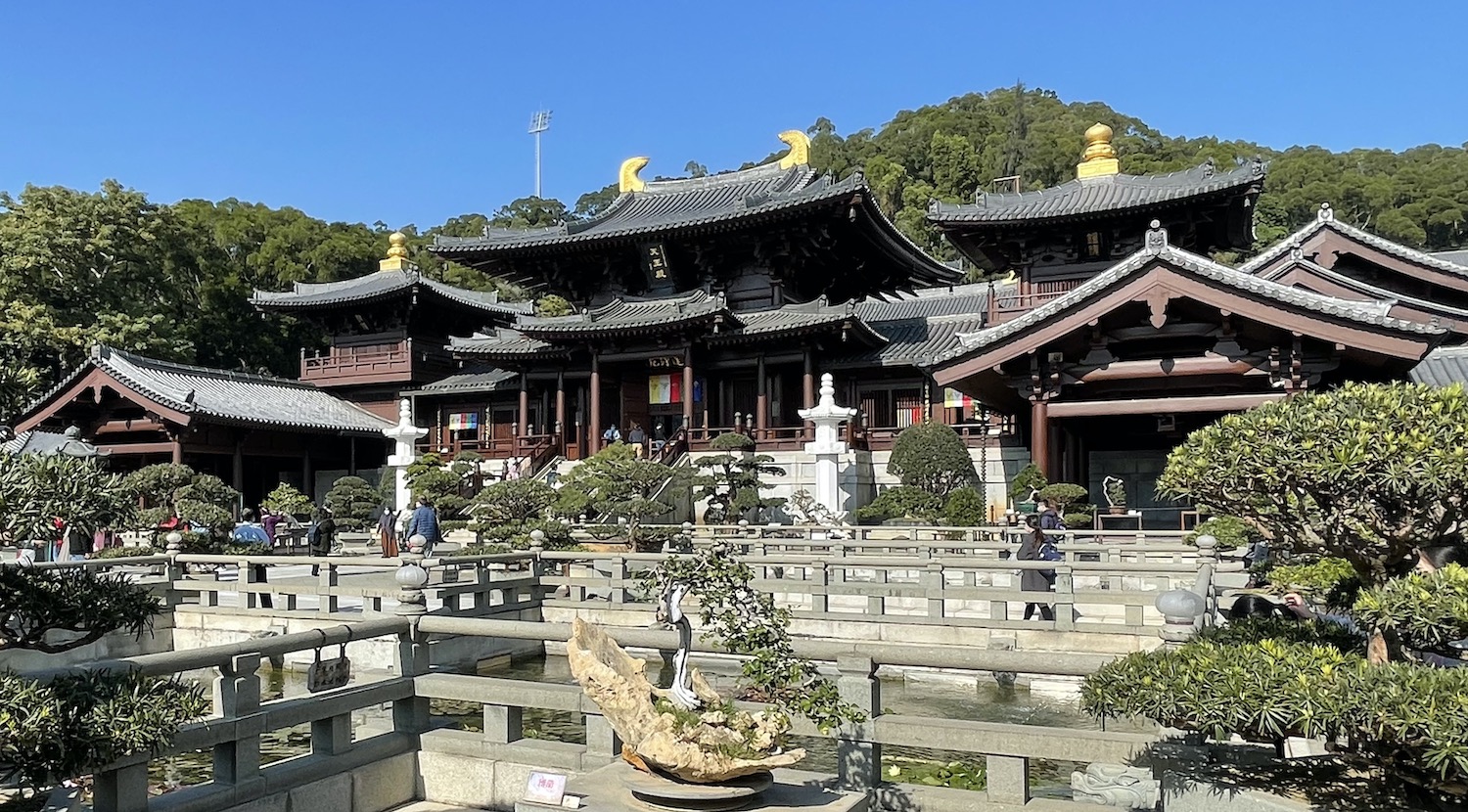


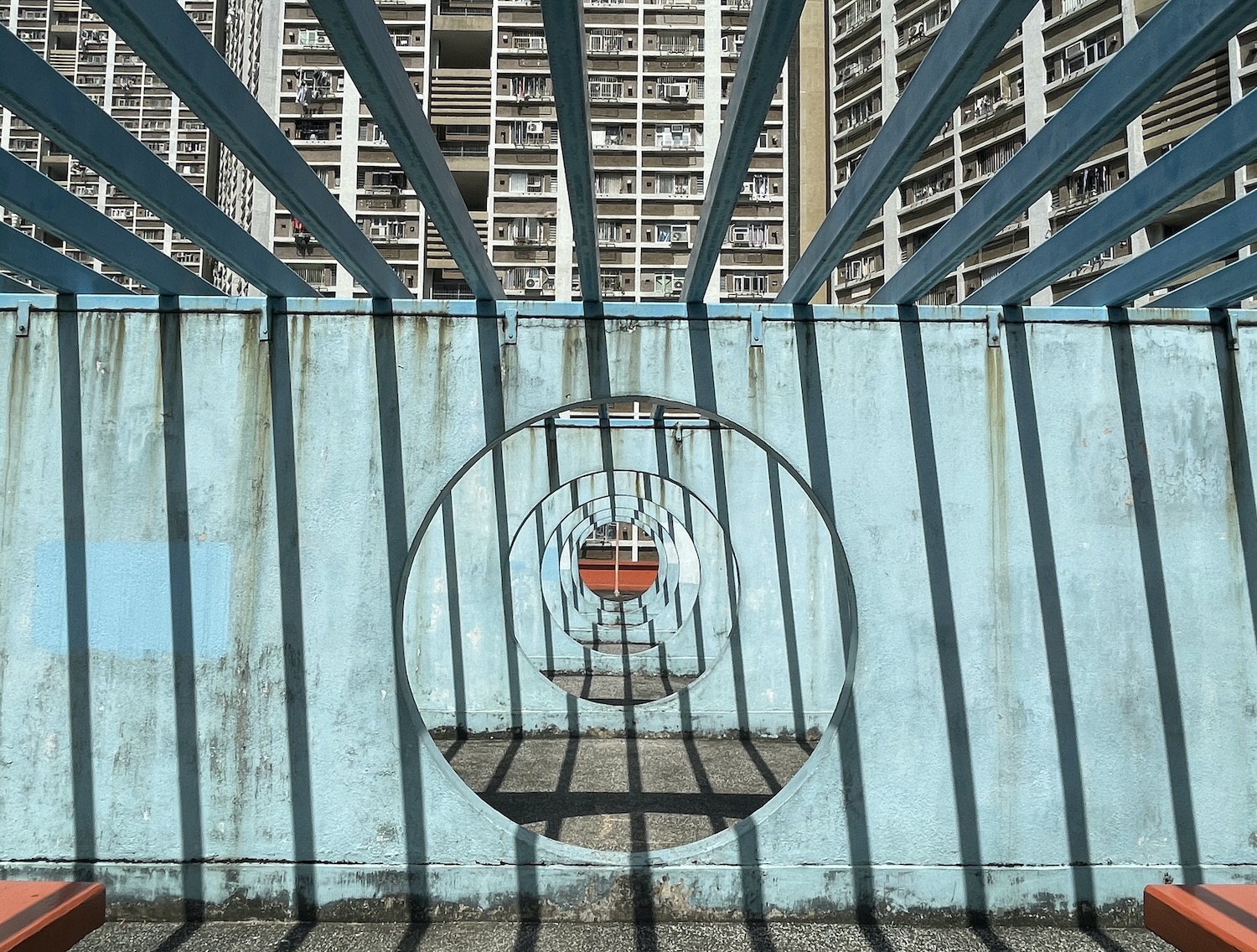
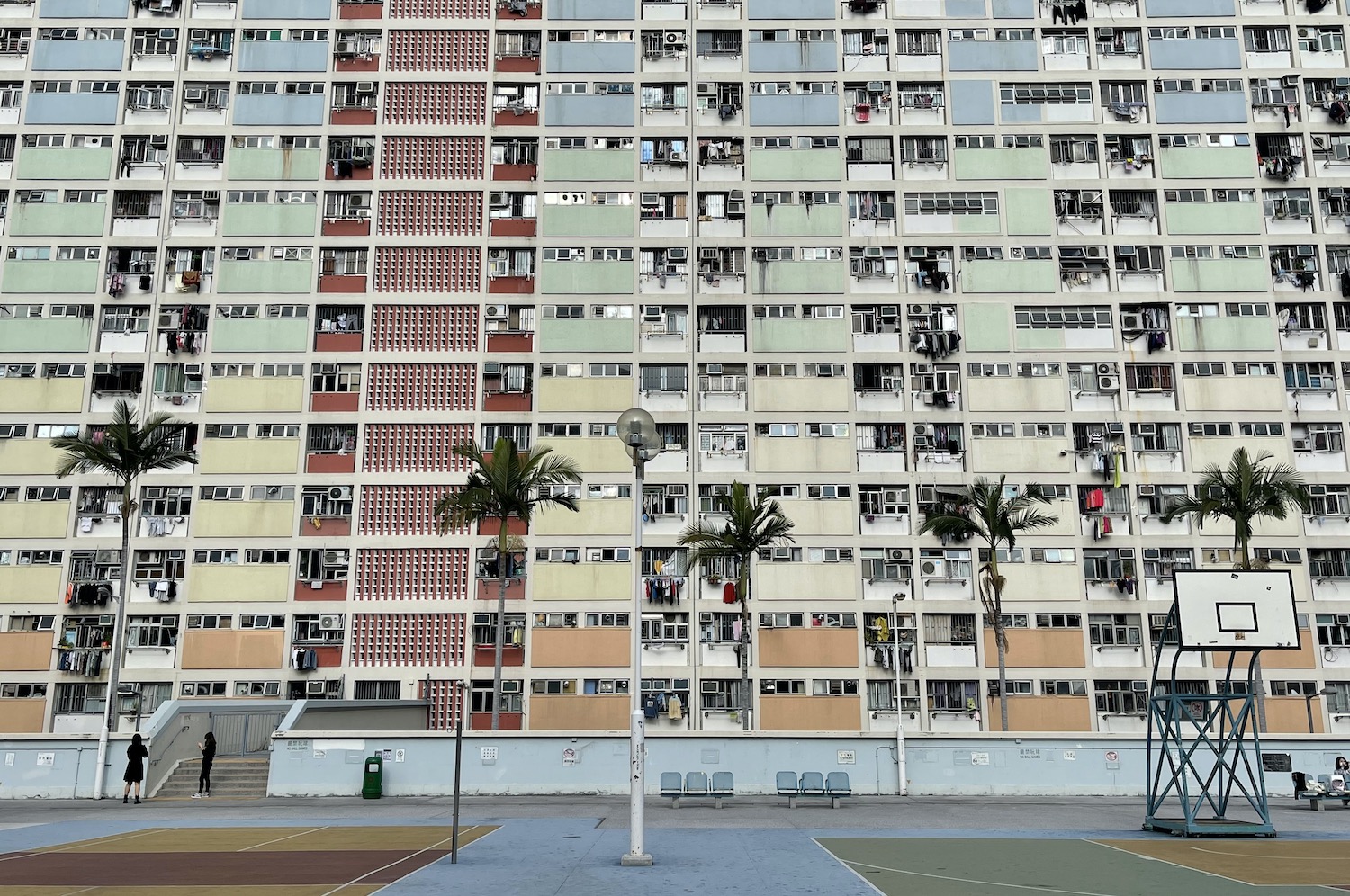
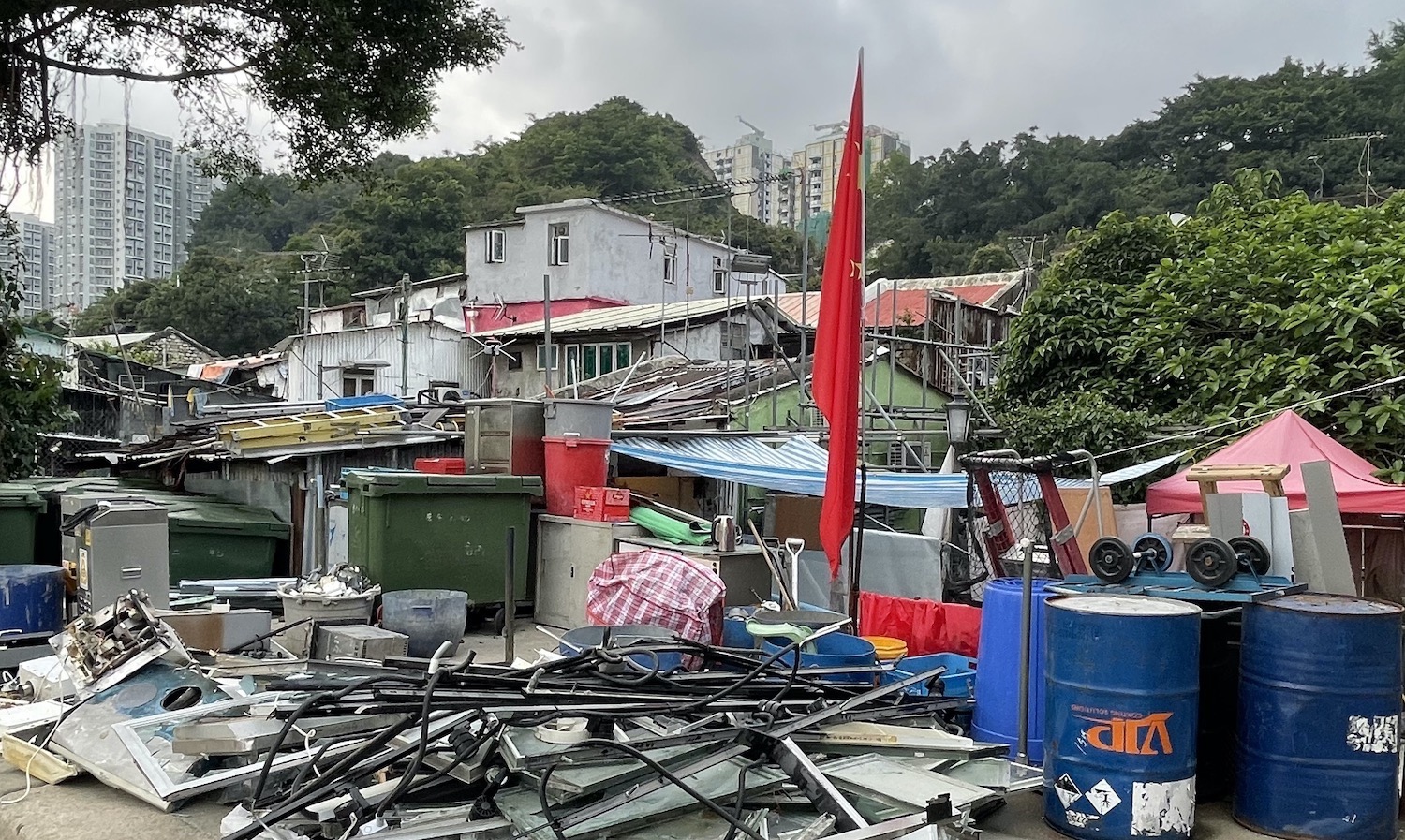

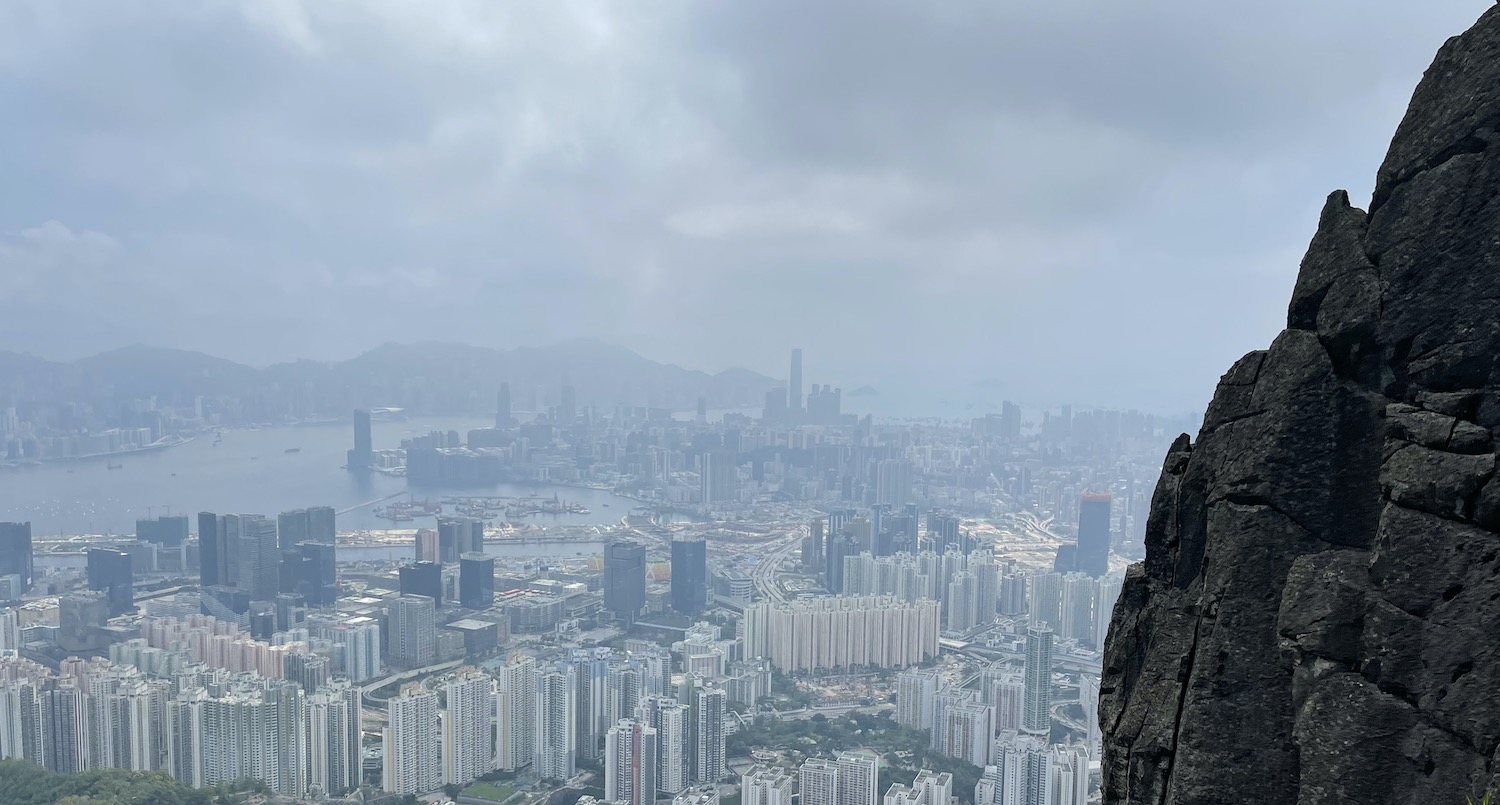
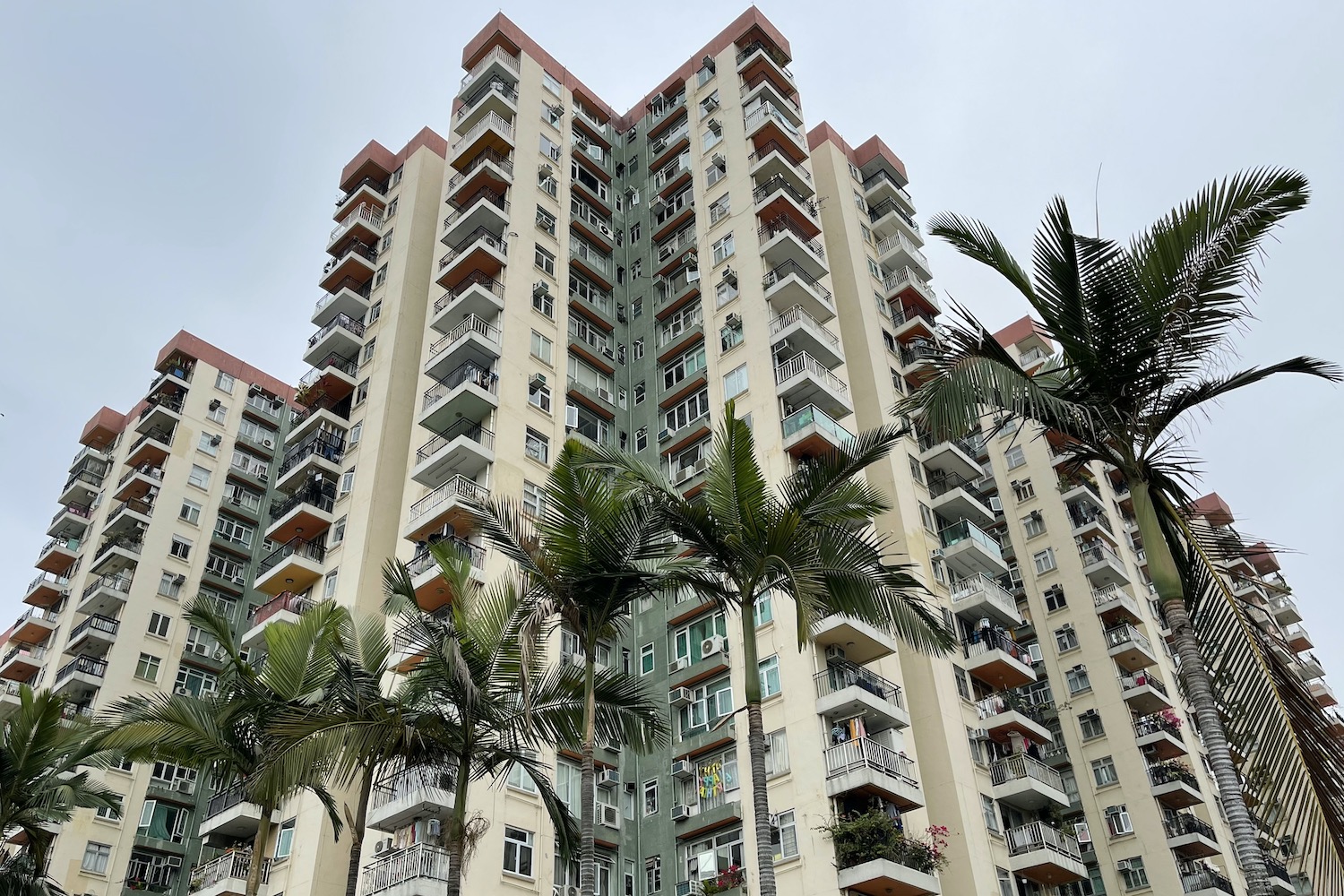

04/10/2021 @ 11:34
This gives a spectacular , fascinating and thorough overview of the Territory.
A very useful and comprehensive guide for visitors. Really enjoyable !